On January 25, 2020, I registered to walk the Navy's 34th annual Bay Bridge Run in May.
 circa 2021
circa 2021On April 1, 2020, I received the cancellation notice. And it would be another two years before I could get onto that bridge.
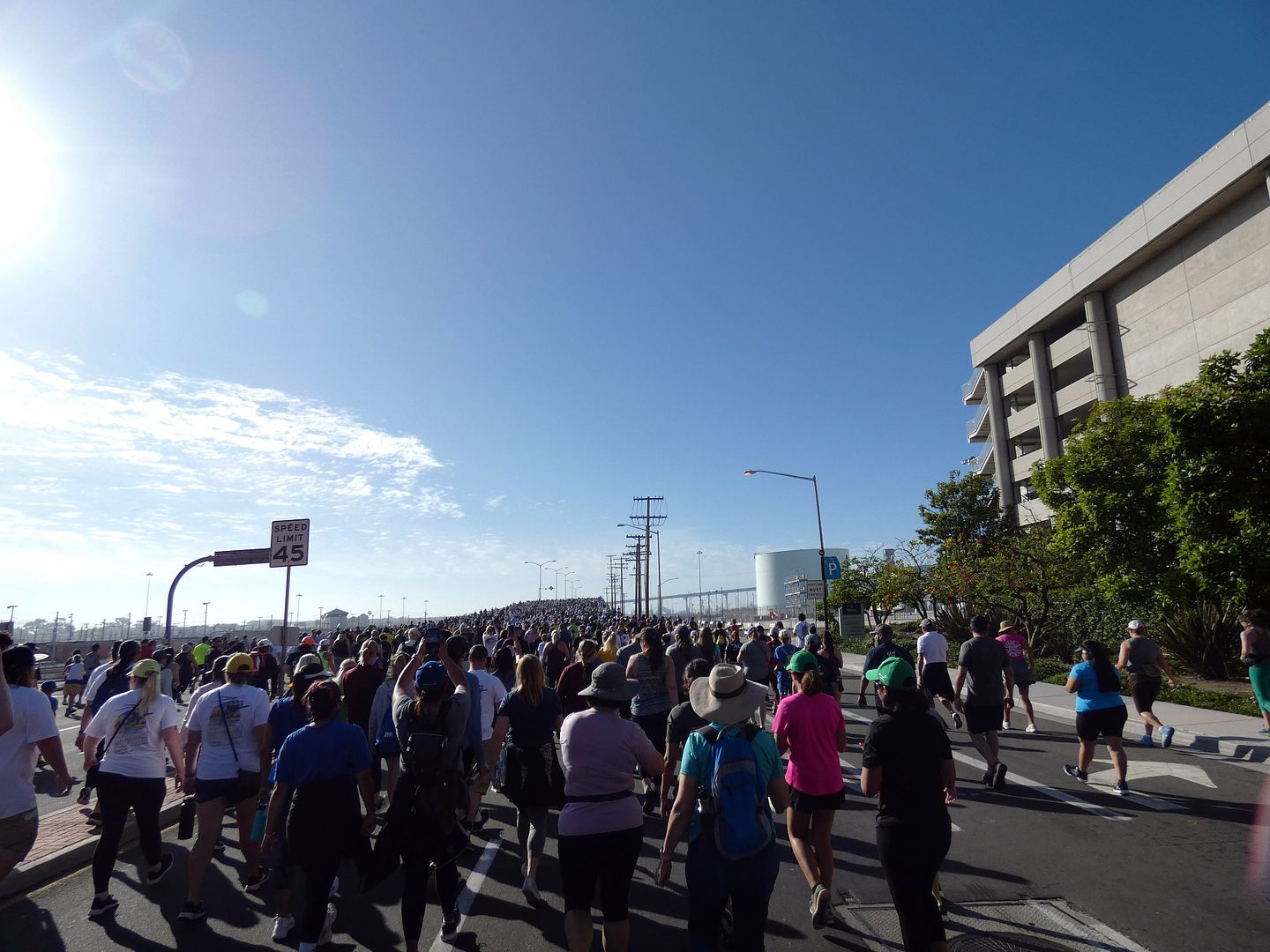
This past weekend, I finally got to join the starting line (between the Convention Center and the Hilton San Diego Bayfront hotel) for the 35th annual Navy Bridge Run. (The 34th one ended up being held as a "virtual" race in 2021, but I deferred so I could actually cross the bridge in person.)

After two years' worth of pandemic, I was in worse shape than I'd been when I registered. I hadn't been able to continue the personal training sessions I'd been taking every other week pre-pandemic.
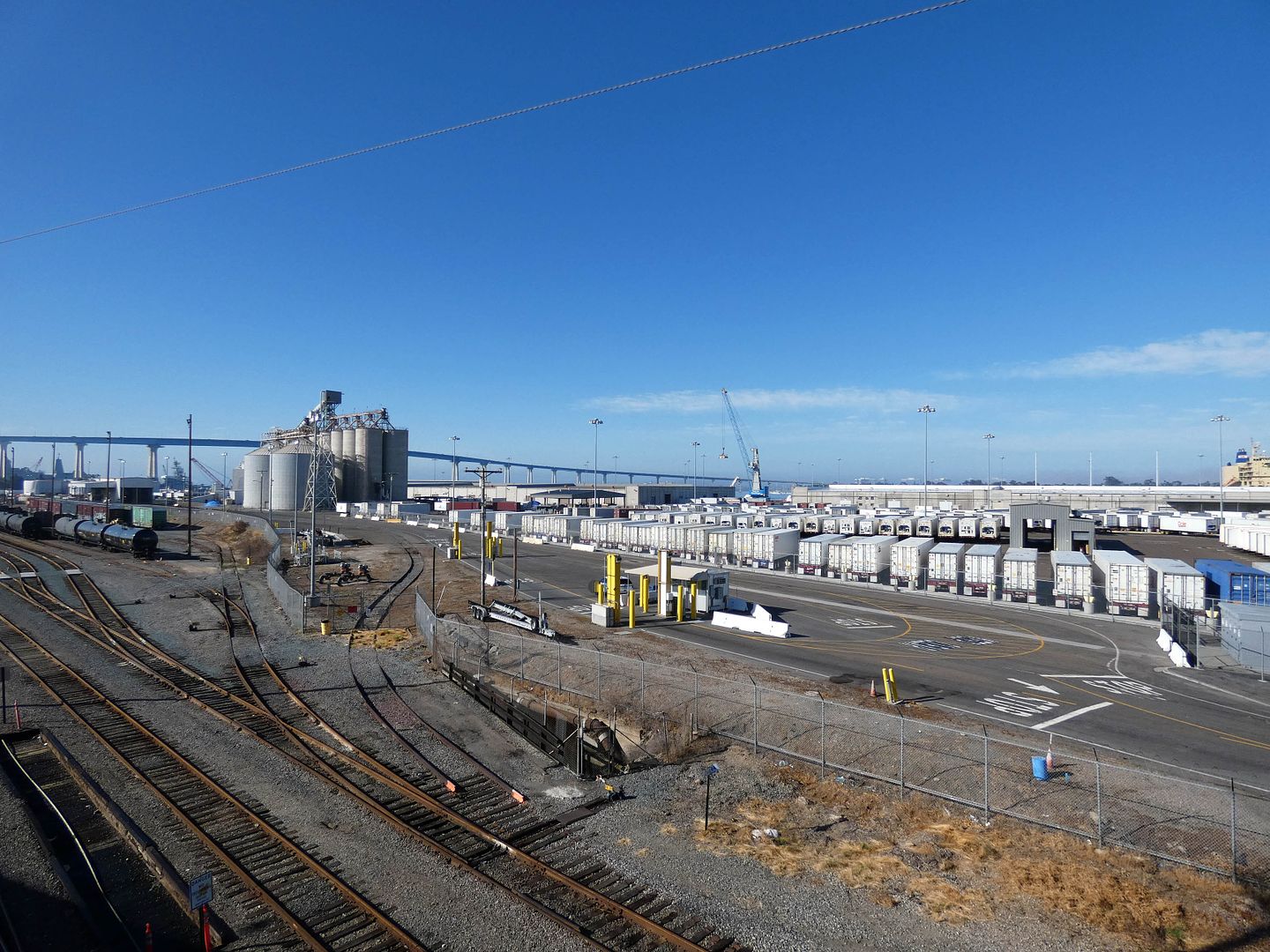
So, that first mile of the 4-mile race was tough—even just walking down Harbor Drive, under the Harbor Pedestrian Bridge, and past the Santa Fe Freight Yard.
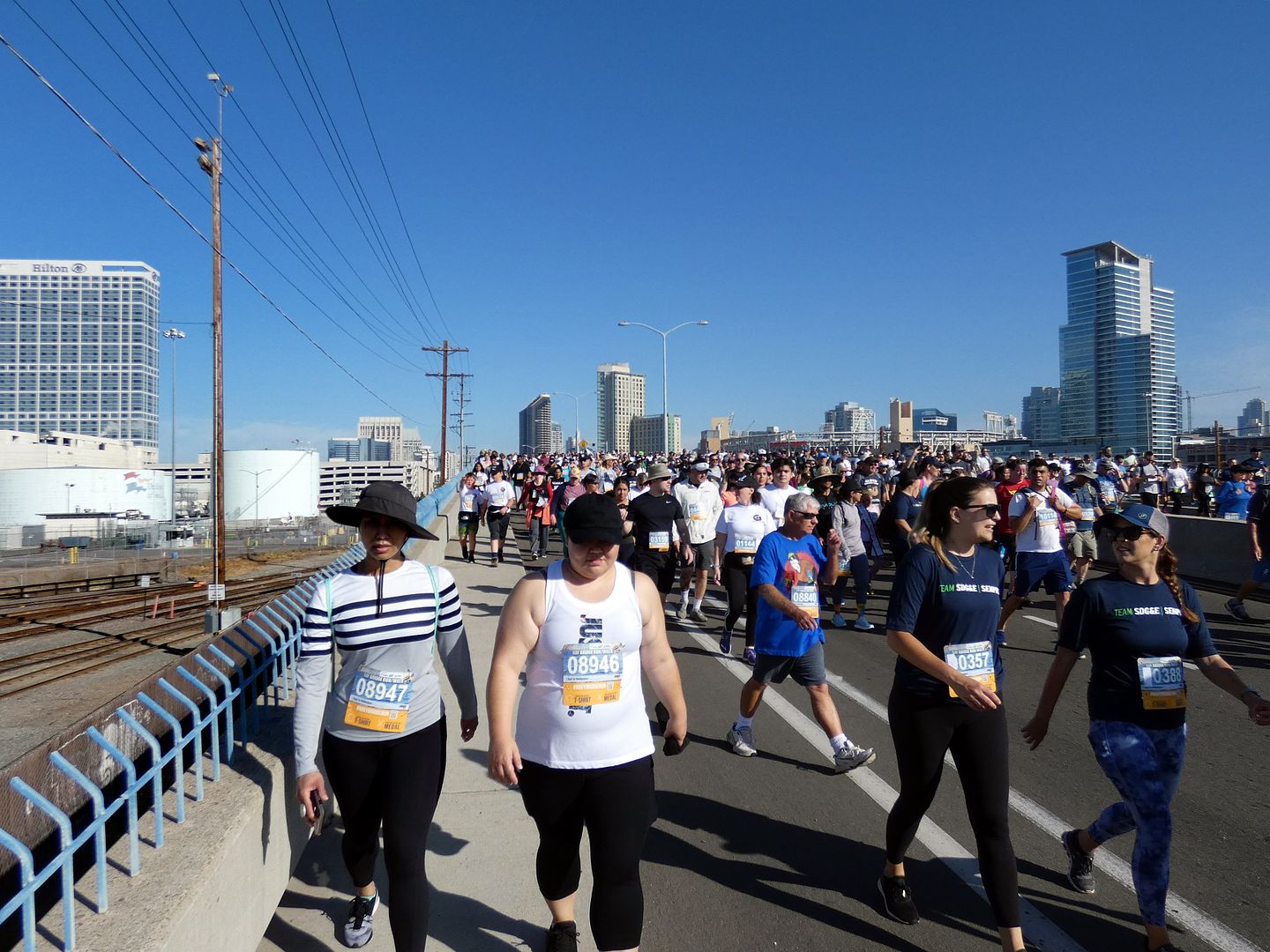
I looked behind me to note the progress I'd made—and to make sure that I wasn't dragging too far behind.

I'd started towards the back of the crowd, letting the runners set off first—but I'd inched my way a little forward to give myself a bit of a head start, so I wouldn't be dead last going into the race.
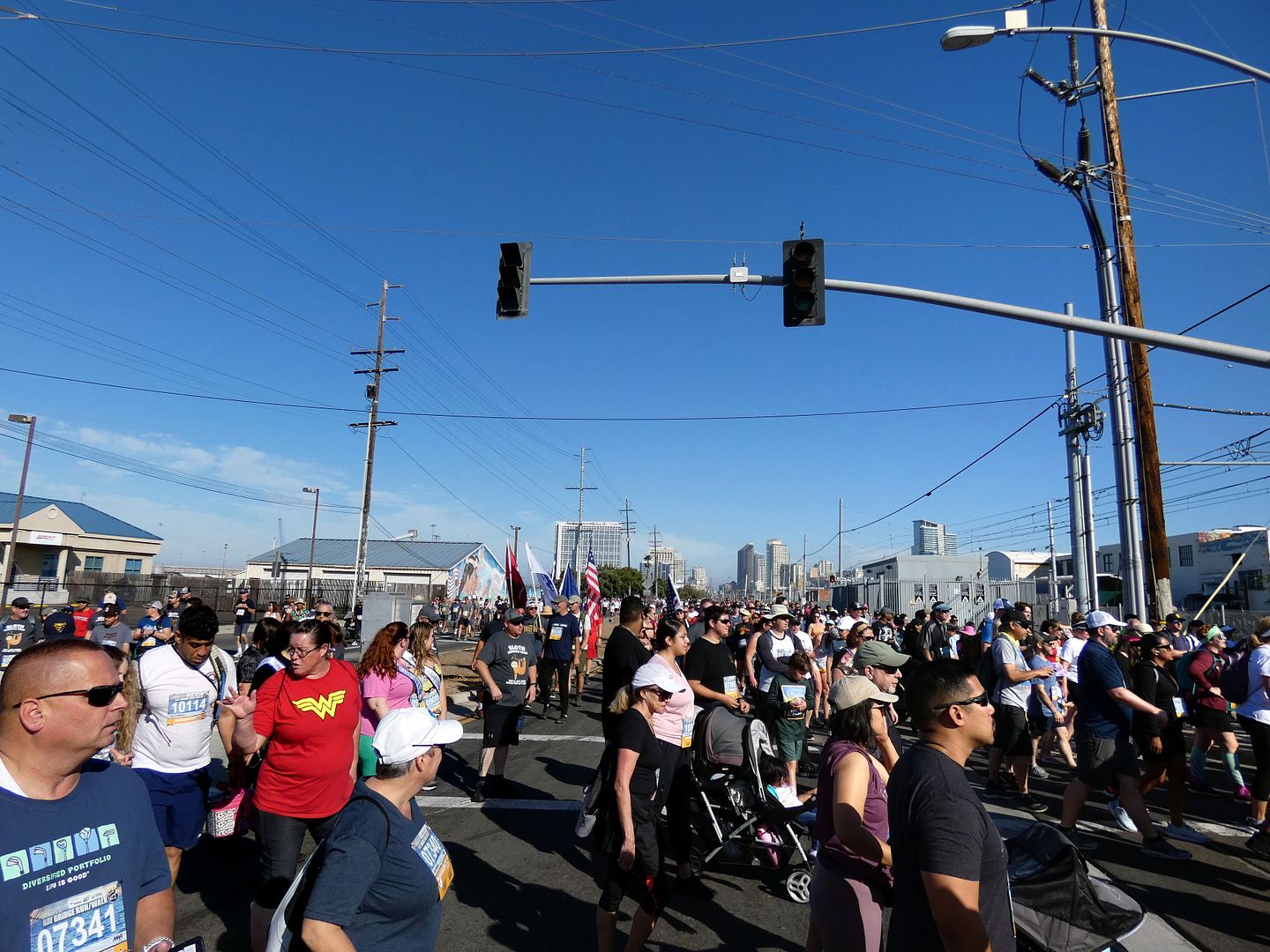
The Coronado Bridge had already been in our sights by the time we turned left from Harbor onto Cesar Chavez Parkway...

...crossing the trolley tracks to the Barrio Logan archway just past Main Street.
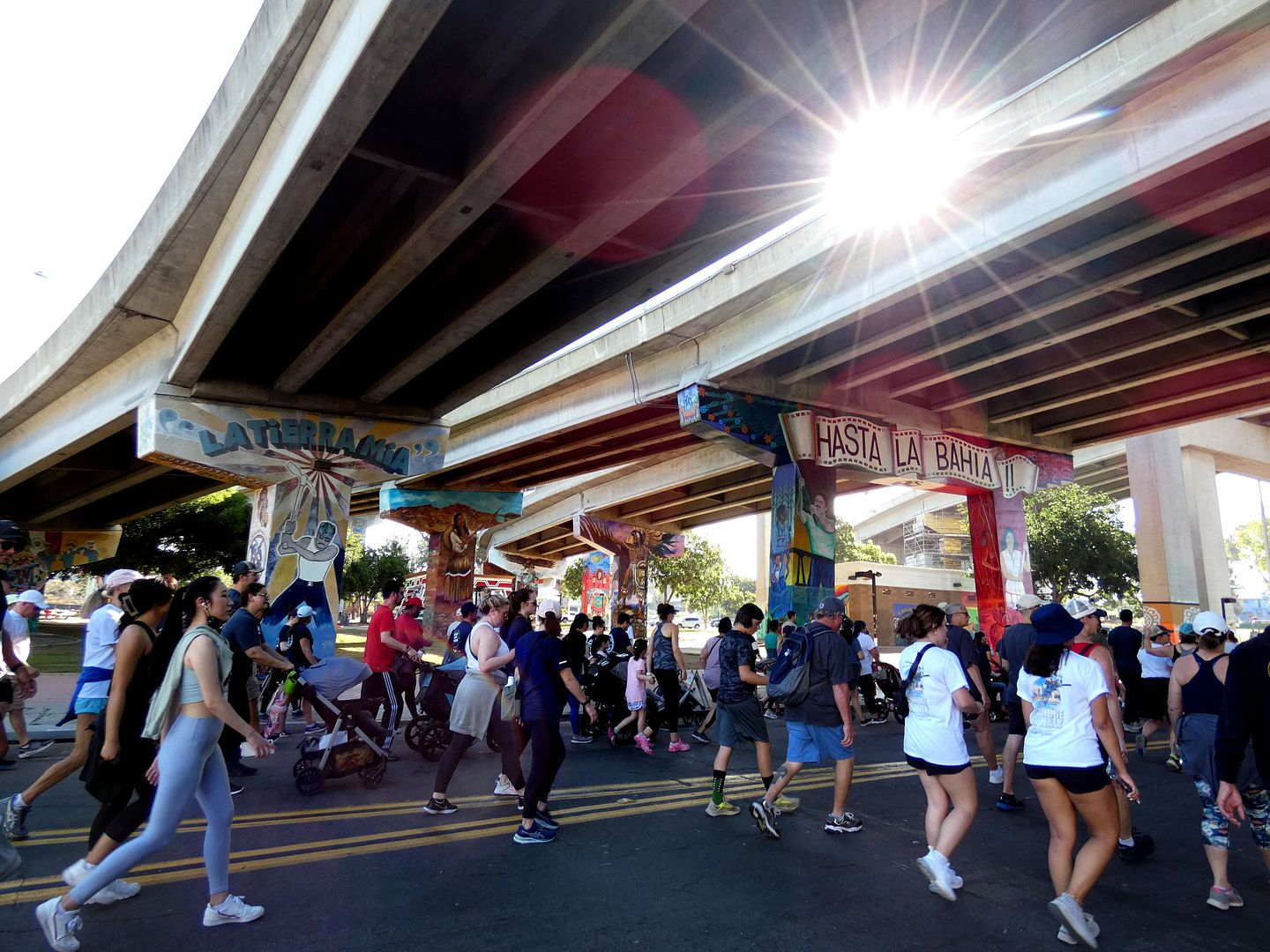
We hit the Mile 1 marker as we turned right onto National Avenue from Cesar Chavez, then crossing under the Highway 75 (a.k.a. the Coronado Bridge) overpass...
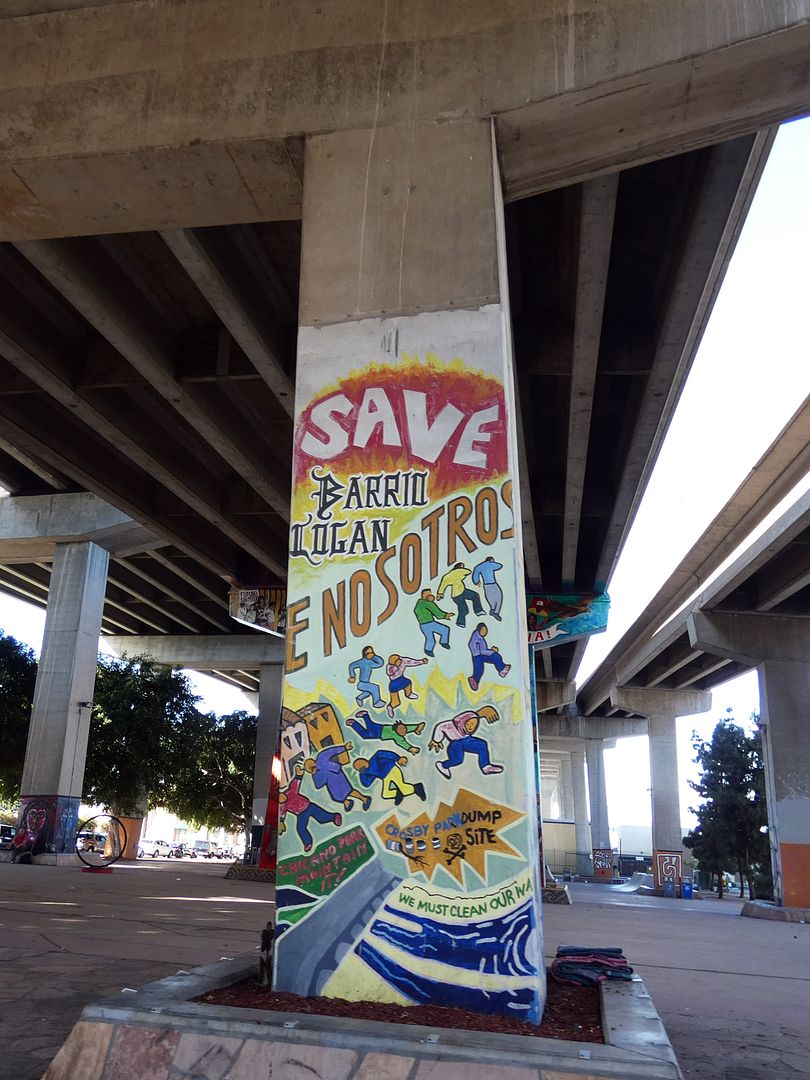
...whose supports are painted with colorful murals, a natural extension of the public/street art in adjacent Chicano Park (where you can find the world's largest collection of Chicano art murals).
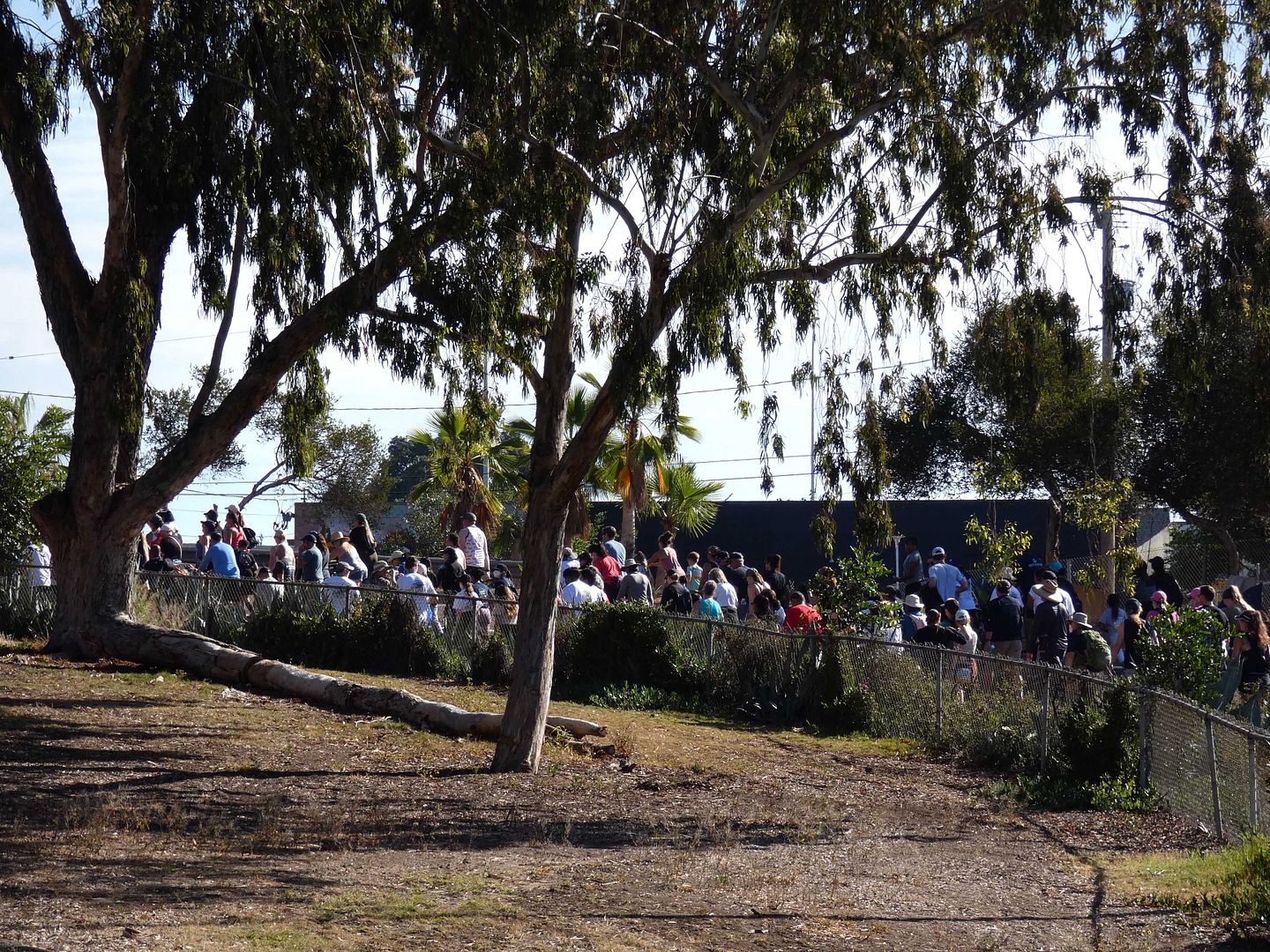
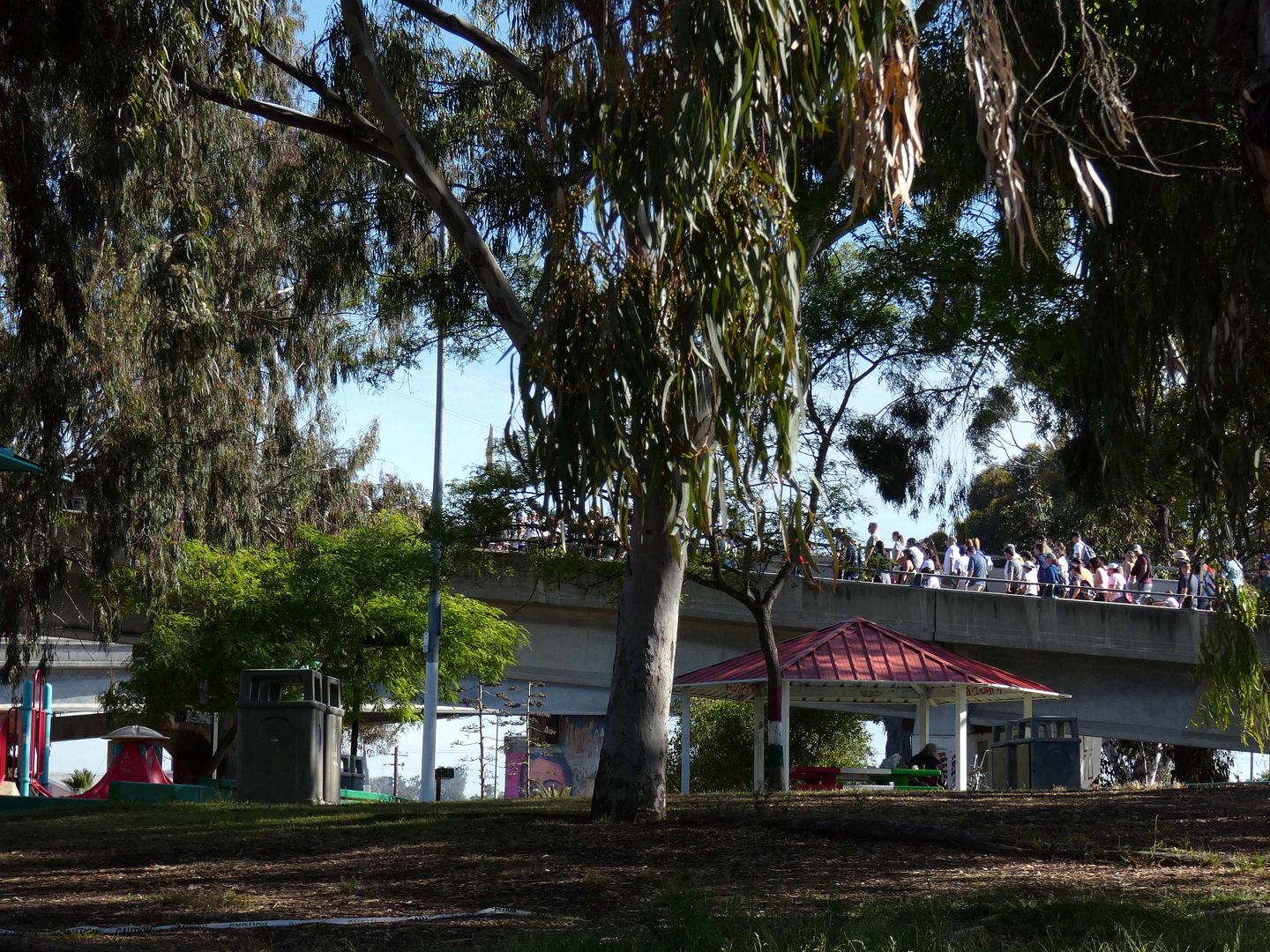
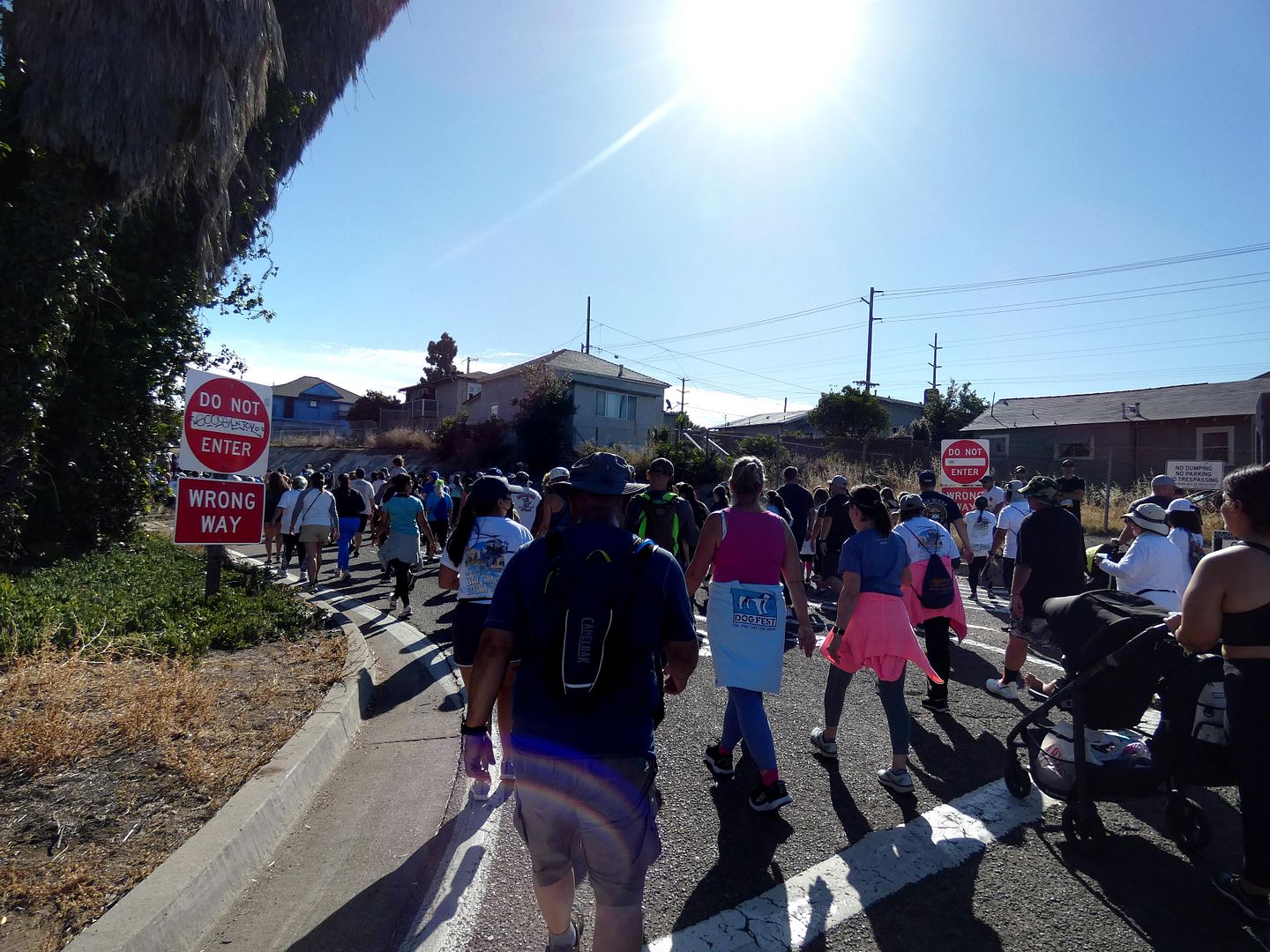

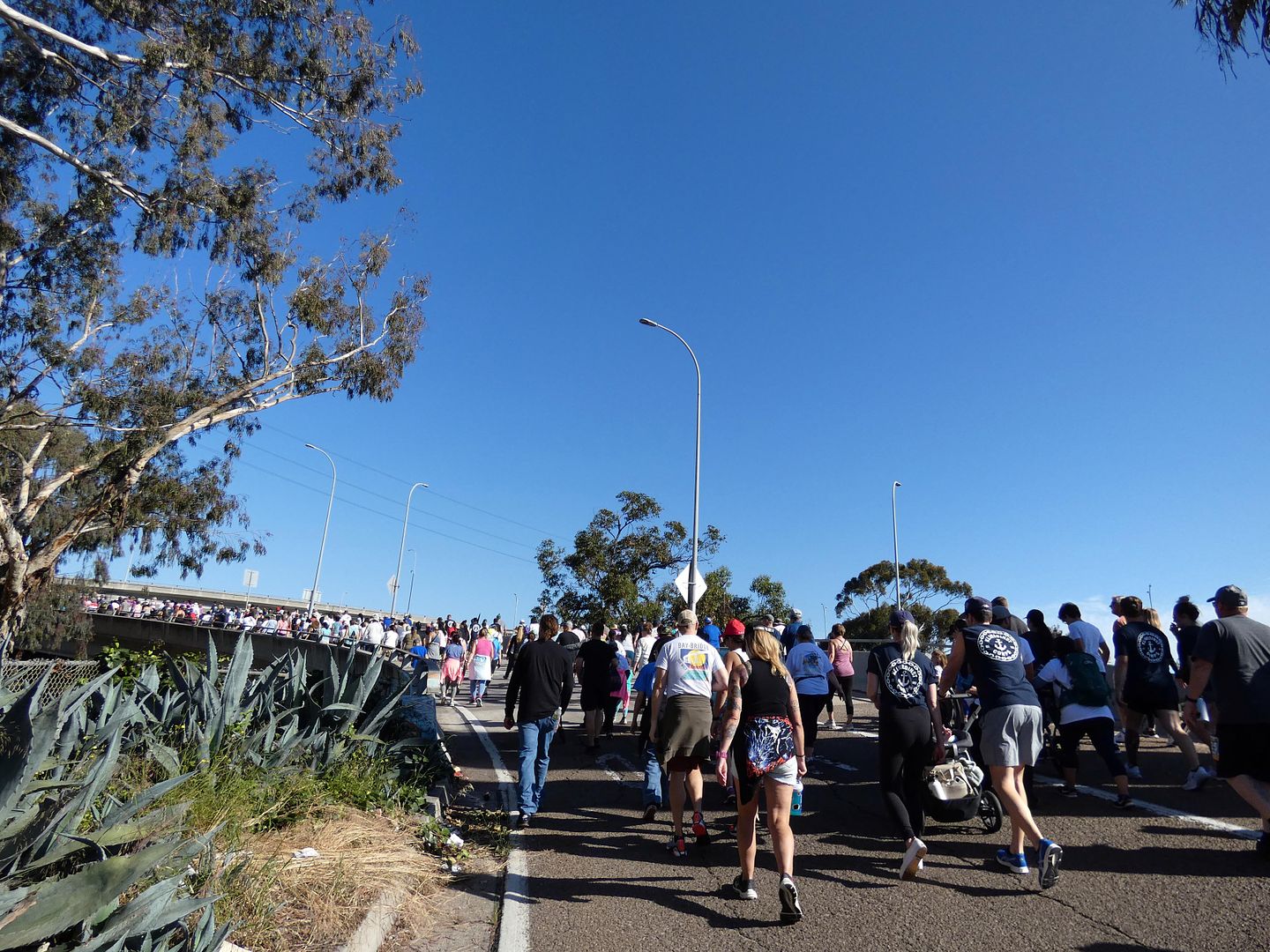
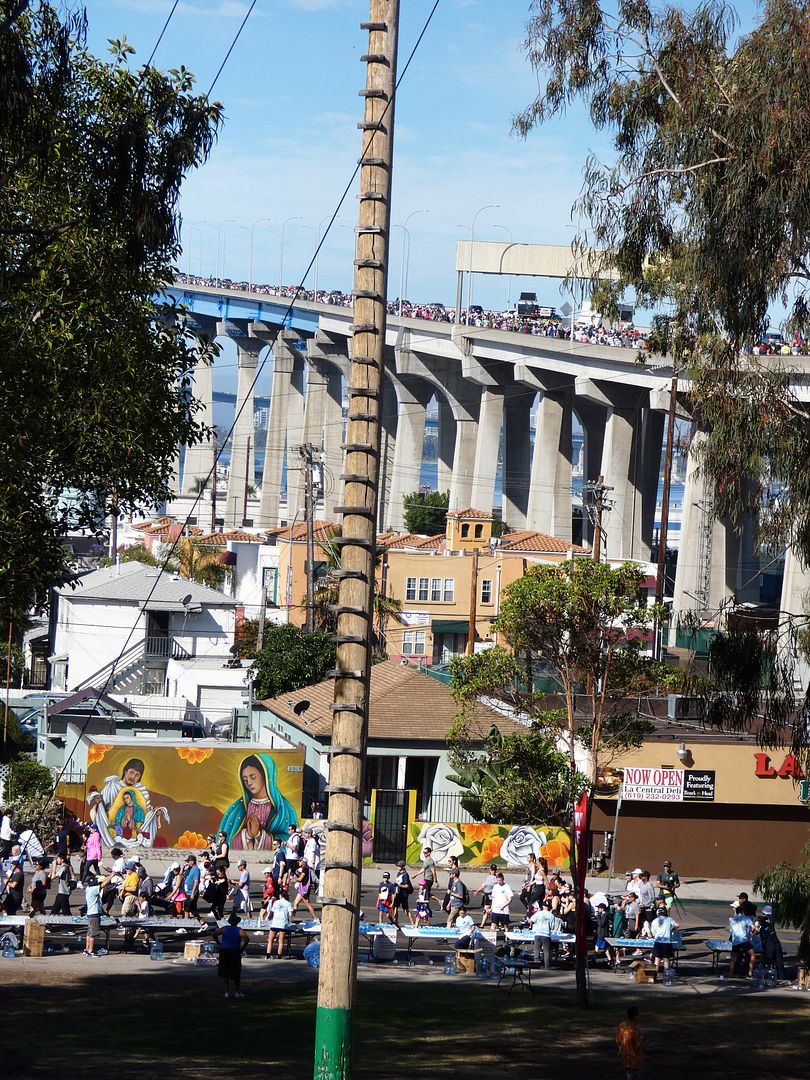
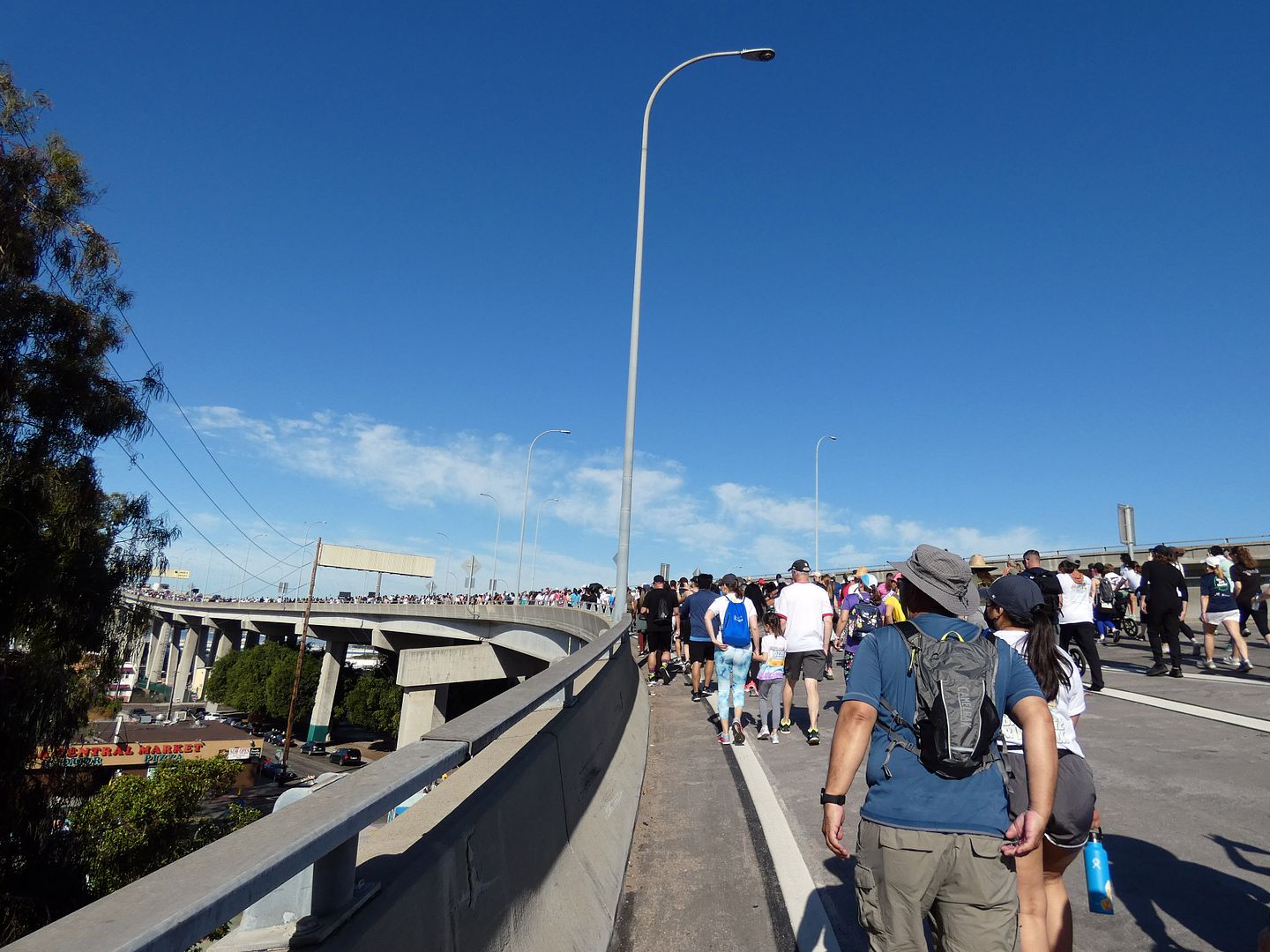

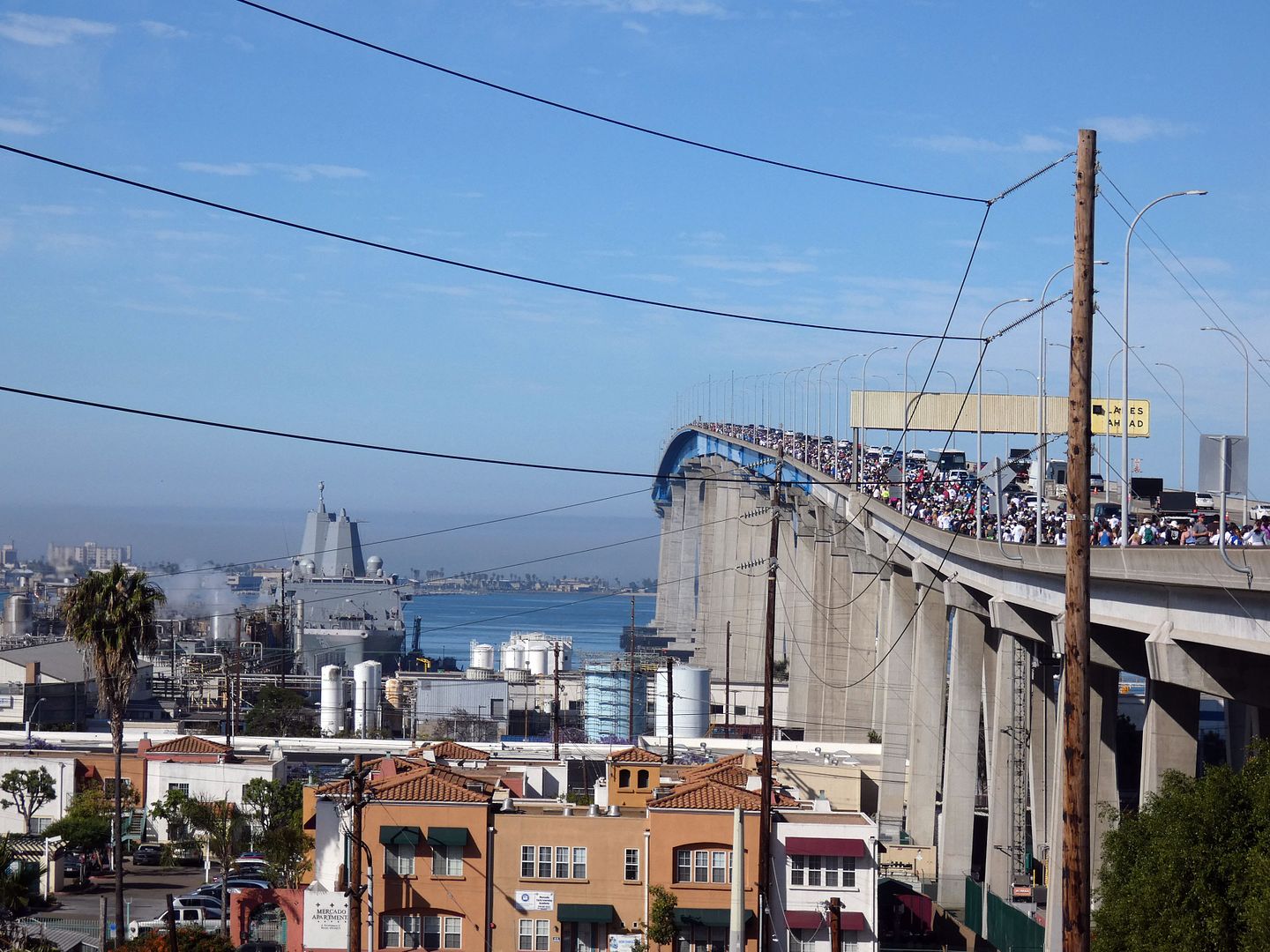
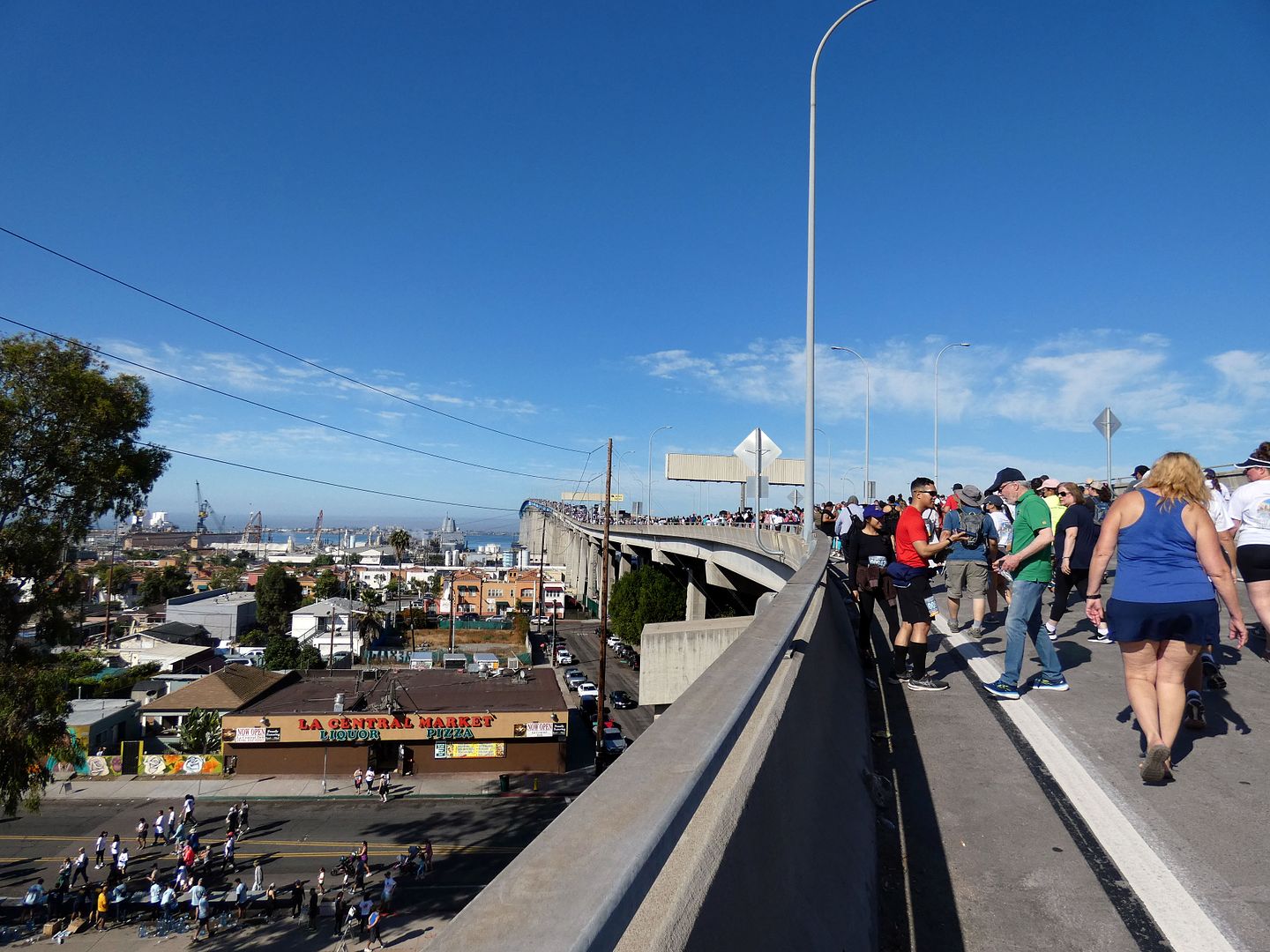
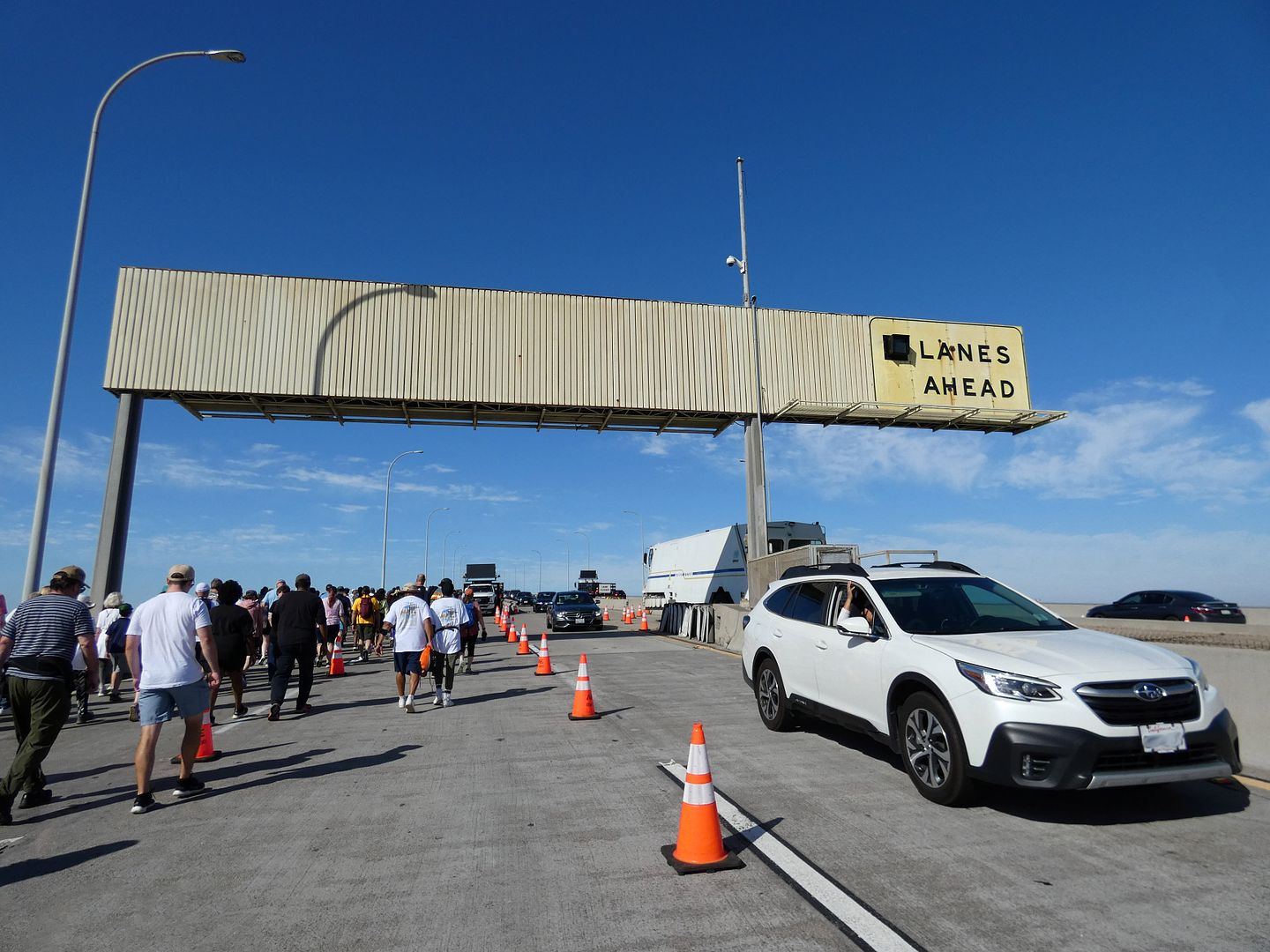
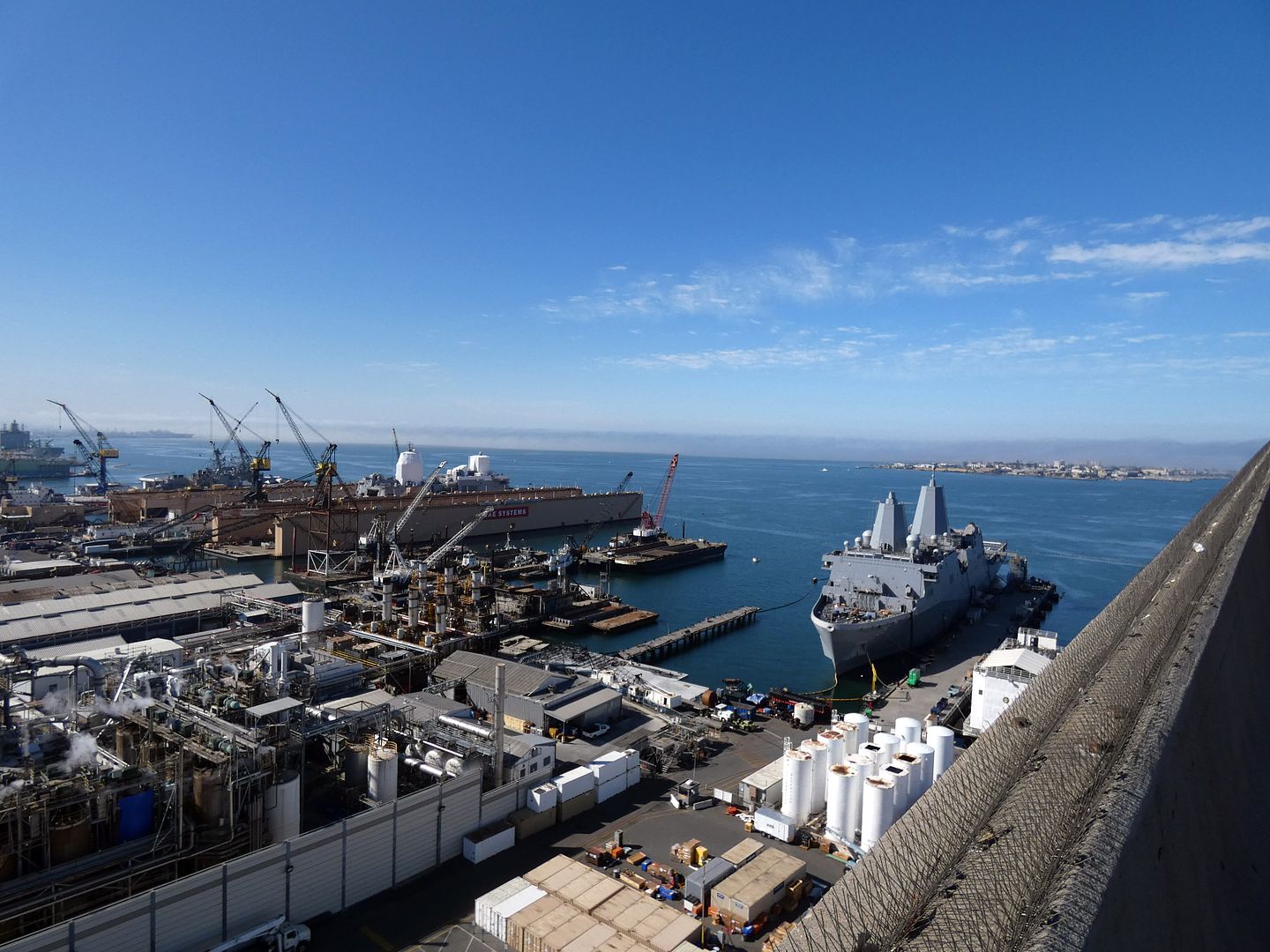
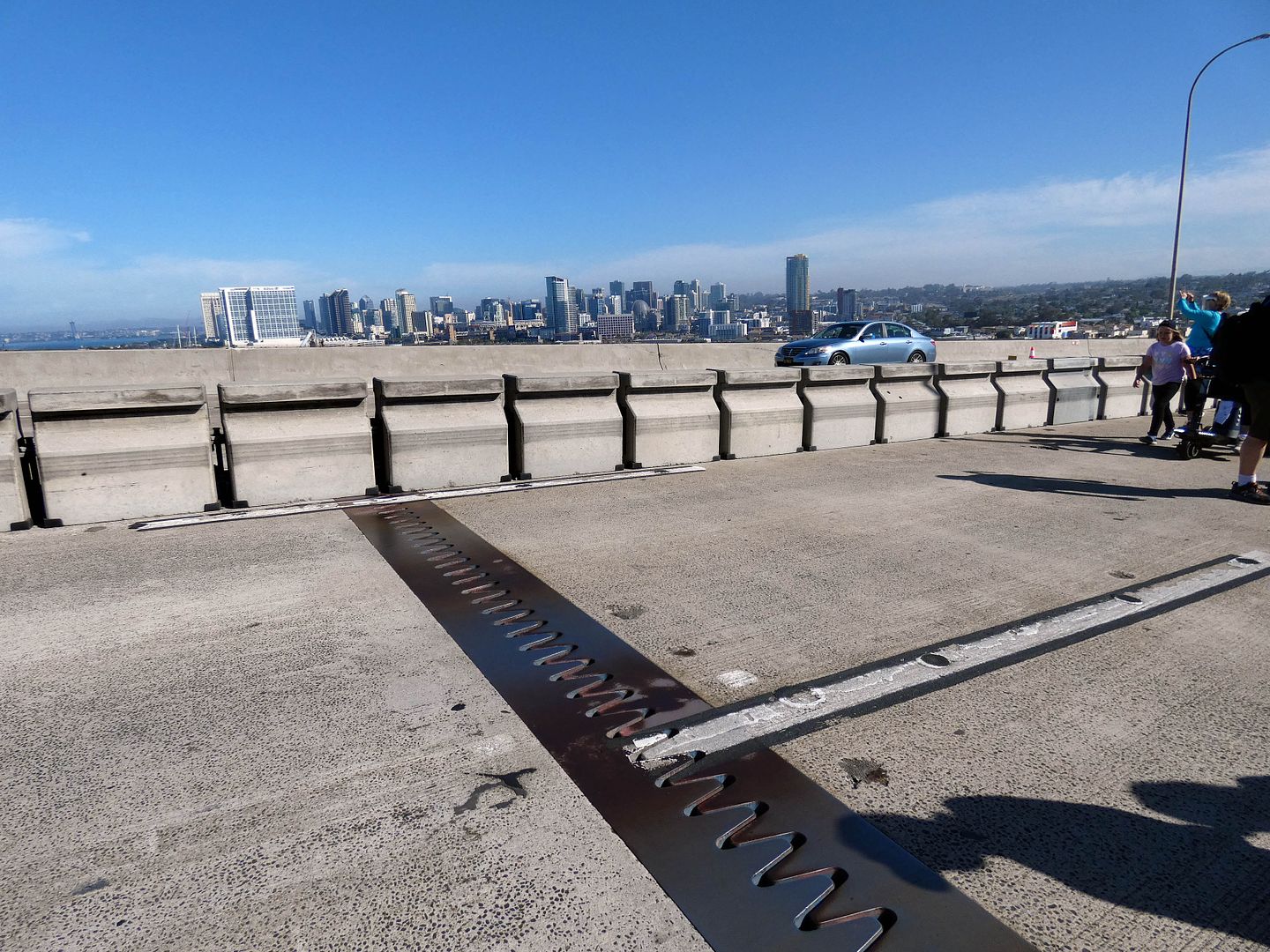
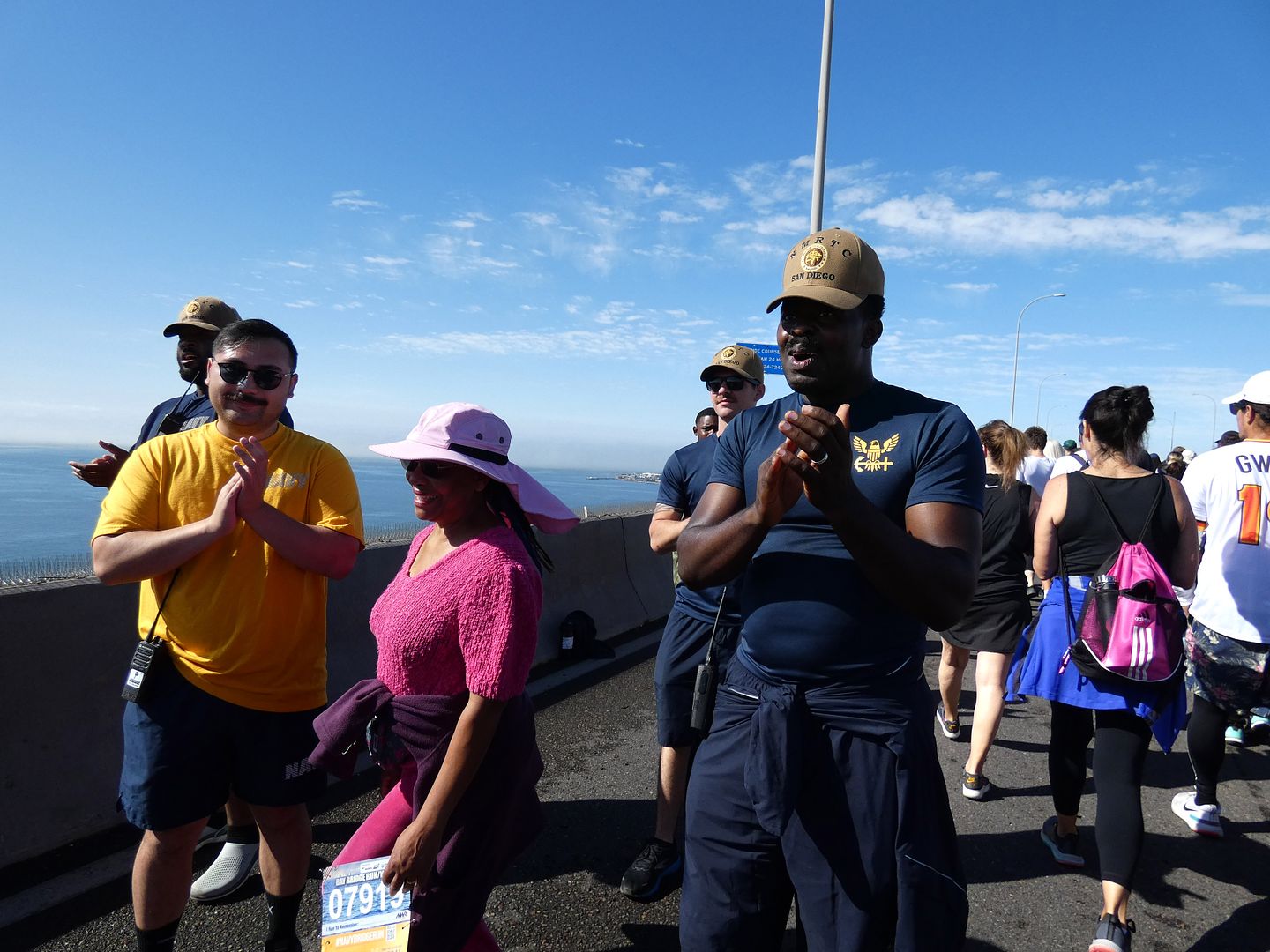


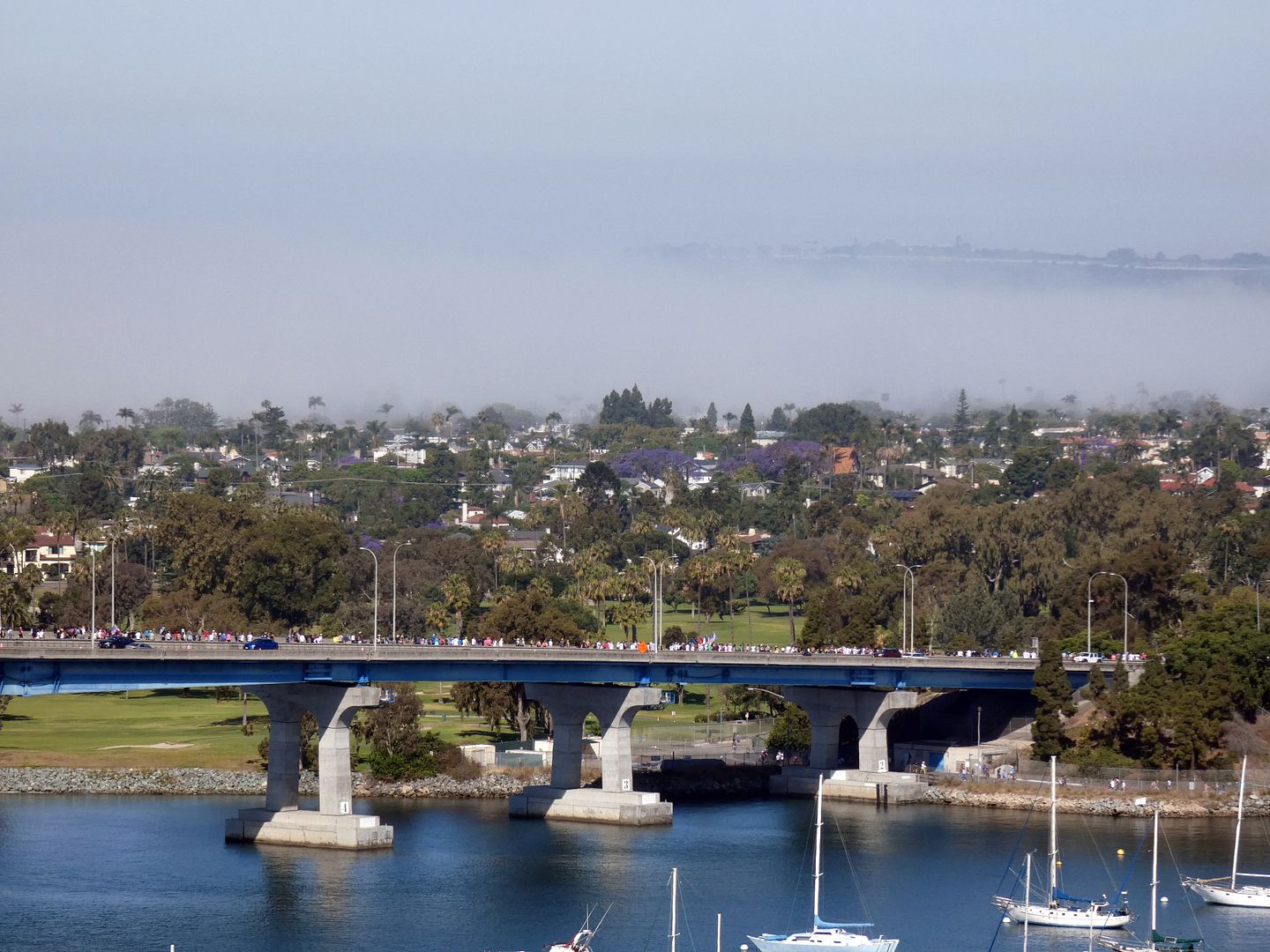
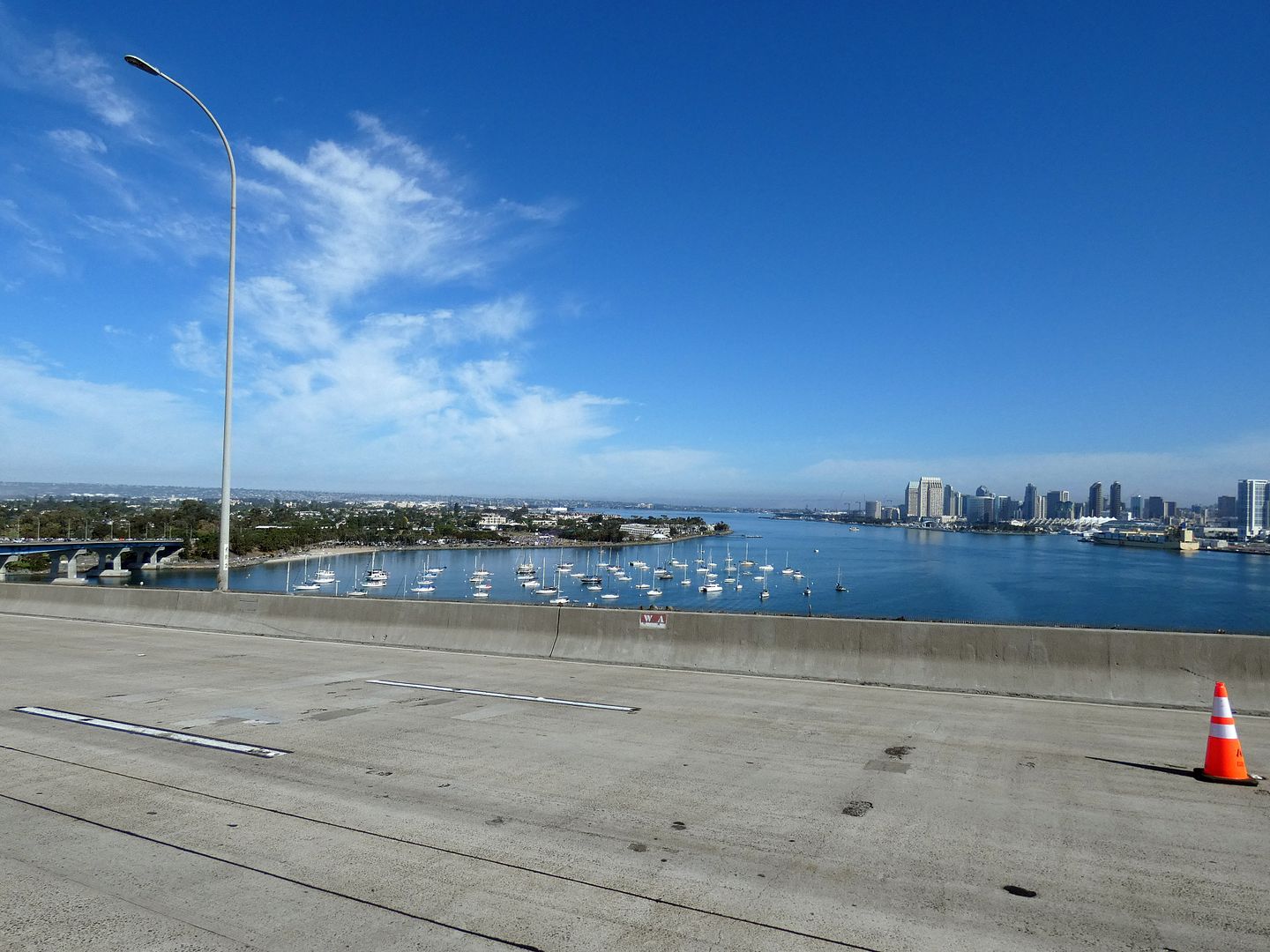

After stopping for a quick water break...

...and to listen to some mariachis...

...it was time to do what no pedestrian is allowed to do except one day a year...

...and start walking up the off ramp of this massive, vehicles-only bridge.

Earlier on, I hadn't been sure that I could even make it past the first mile, with not enough sleep and nothing but a granola bar for breakfast.

But getting to see not only where I was going, but also how far I'd already come, helped me hit my stride.

I began grinning so widely, I could feel the wind whistling through my teeth.

And while I still wasn't sure if I could make it 4 miles to the finish line, I'd gotten over the first big hurdle—actually getting onto the bridge.

Of course, I'd driven across the Coronado Bridge from San Diego to Coronado Island (and back) before. And I'd ridden a boat under it, too.

But there's just nothing like walking across it.

The Navy only partially closes the bridge to motorized vehicles during the race—which meant we were sharing the roadway with vehicular traffic traveling in both directions, at one point separated only by some orange cones. (They were later followed by moveable barriers.) Passing drivers would honk and wave.

The only thing keeping us from tumbling off the side—and into the Navy shipyard below—were the sharp spikes that look to have been installed to keep the birds off the ledge. (They haven't kept suicidal jumpers from taking a flying leap off the bridge over the years, though.)

The Coronado Bridge, which opened in 1969 upon San Diego's bicentennial, has a peak vertical clearance of 200 feet so that ships and aircraft carriers can pass beneath it. That requires a curved bridge design—one that spans 11,288 feet to cross a channel that's about 5000 feet in width, with a 4.67% grade to lengthen the path of ascent.

For driving, the incline may be gradual—but for walking, it's relentless. It really helped to have a cheering section from the Navy at the Mile 2 marker (or, as they reminded us, the halfway point).

Shortly after that, I passed the medic truck—and was grateful that I didn't need it (yet). (I'd twisted my ankle the prior Monday, so I'd been worried that it might give out on me completely.)

Seeing Coronado Island in the distance also helped keep me going—even if the view was partially enshrouded by fog.

The bridge is supported by 30 concrete towers (or "piers"), designed by architect Robert Mosher like California mission arches (or those of Mission Revival architecture). And he chose the blue color for the box girder ("San Diego blue," he called it) to blend in with the water below and the sky above.

It's things like that that motorists might not necessarily notice while driving across the bridge.
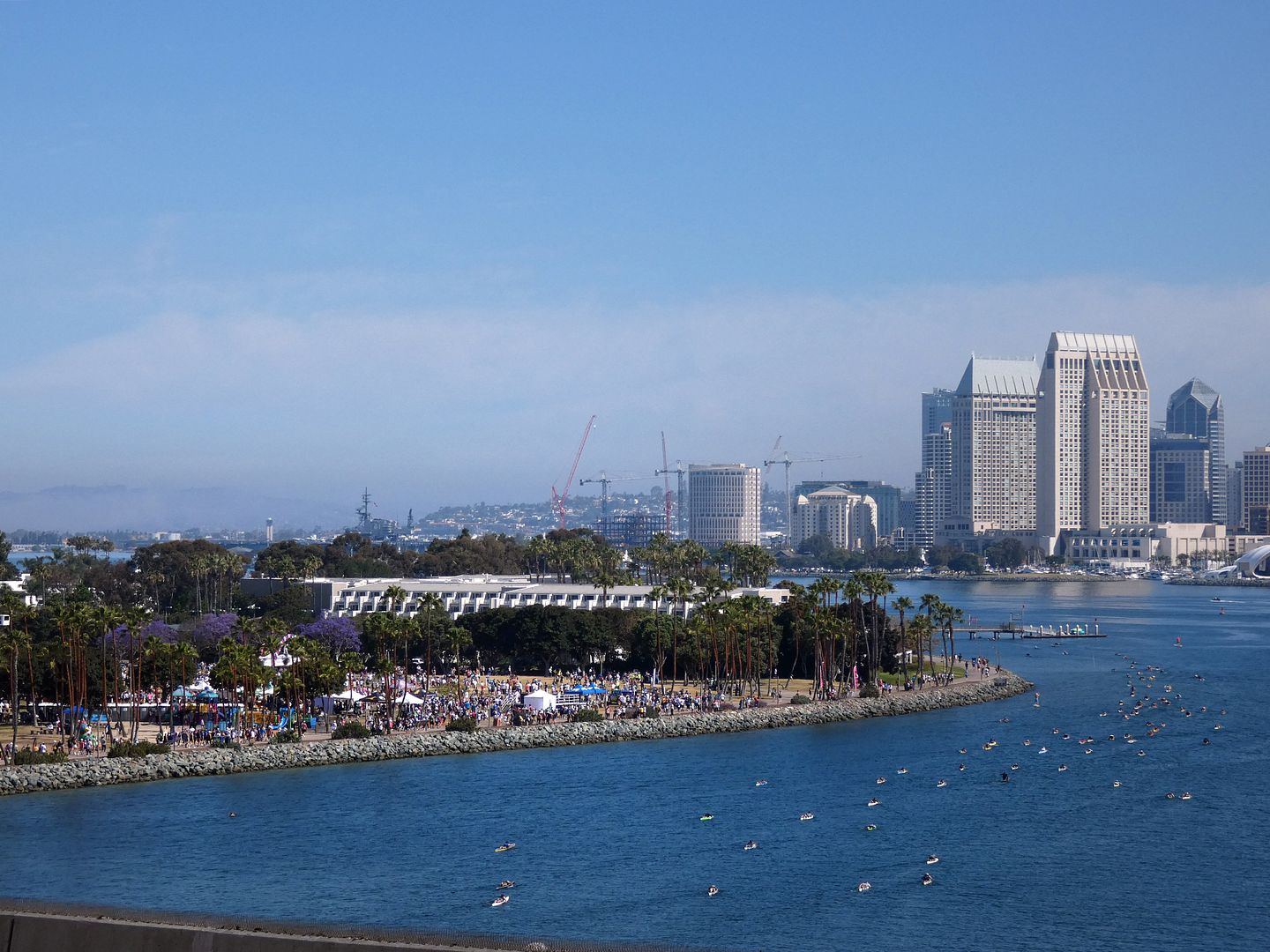
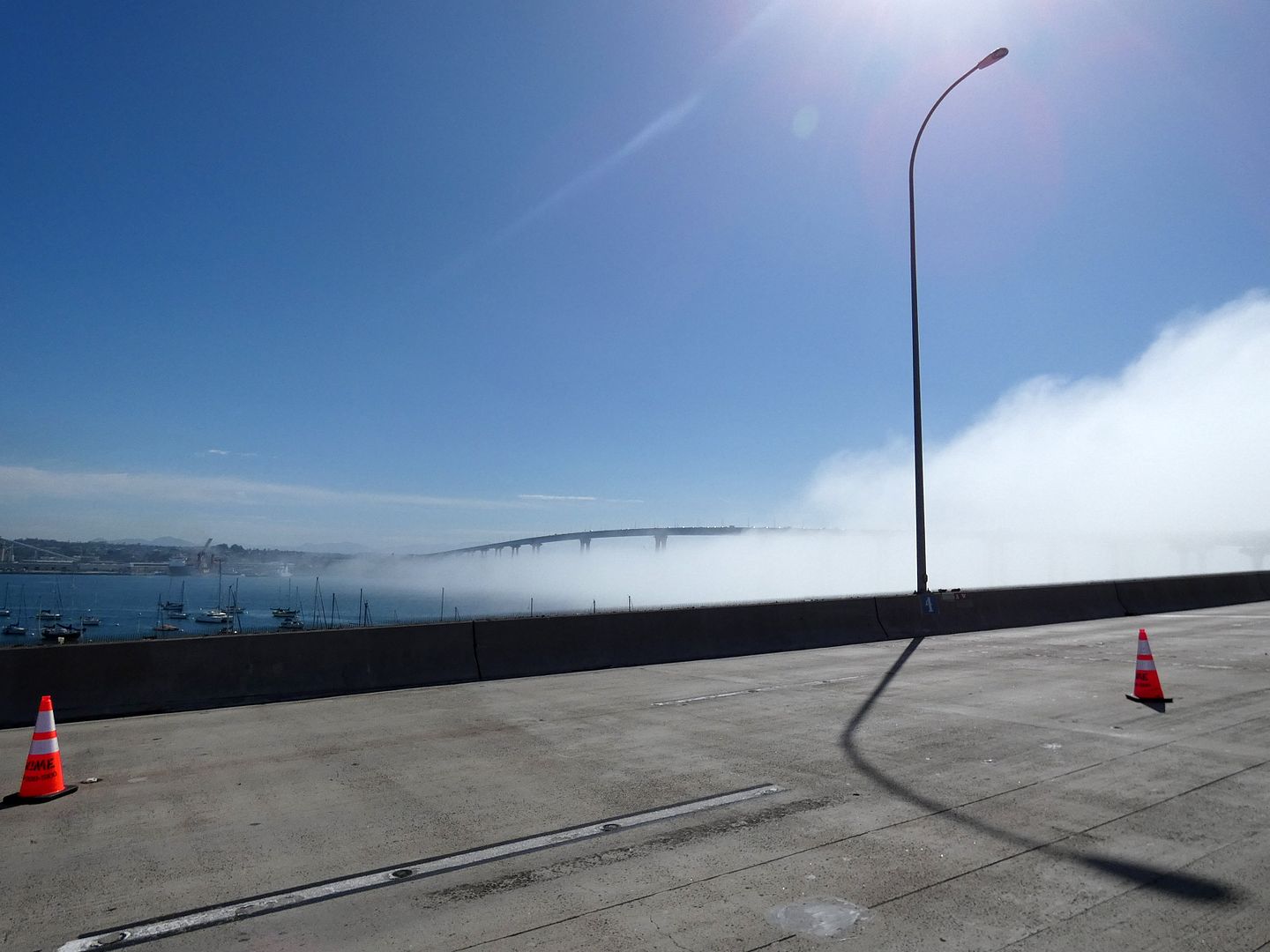
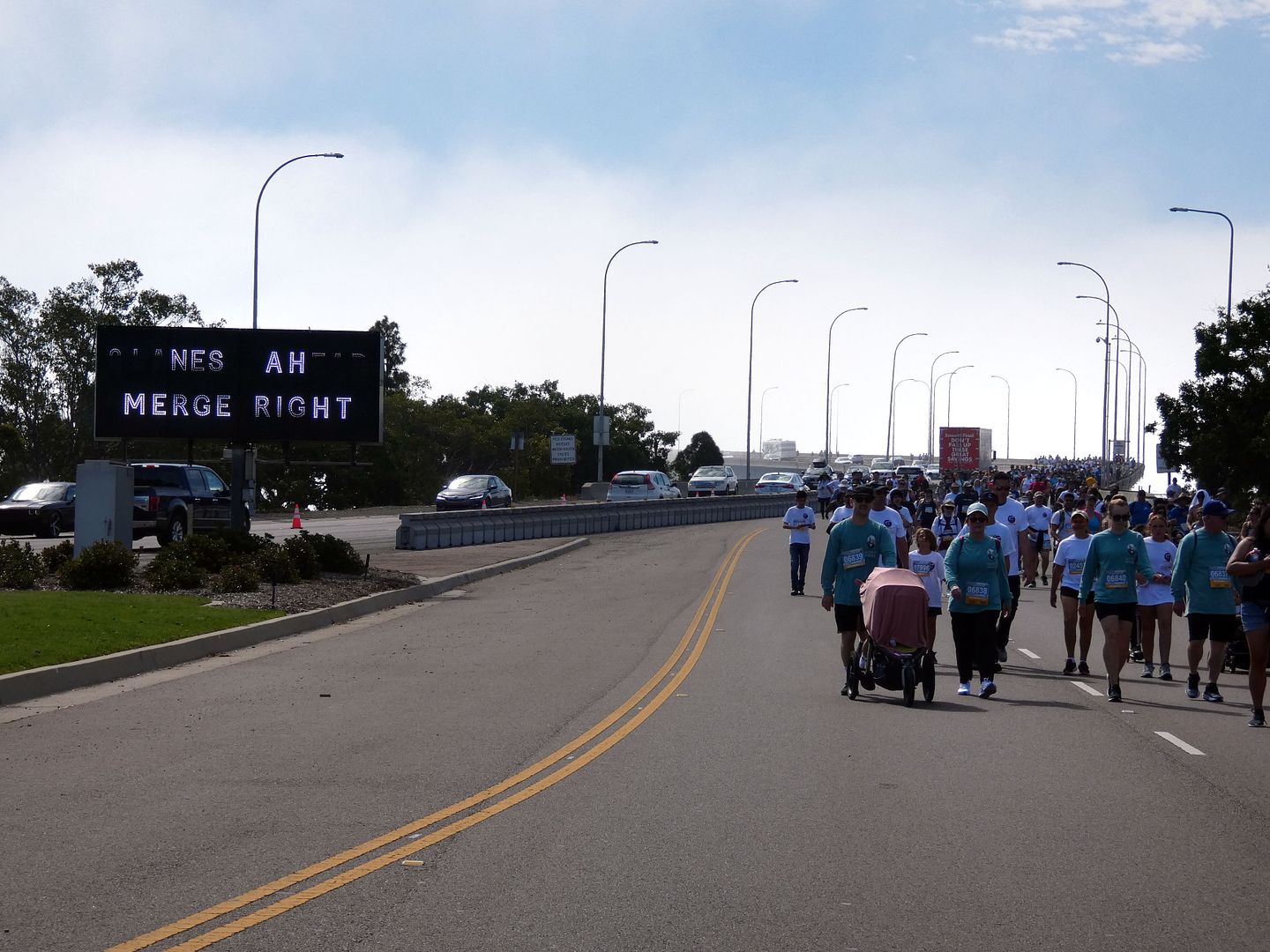

At one point, I could see both our starting point and the location of the finish line in one panorama, with nothing but the San Diego Bay below—and it galvanized my step enough to pass the Mile 3 marker with ease.

As I embarked on what I considered the home stretch, I looked behind me once again to see the Coronado Bridge nearly entirely obscured by the fog rolling in—as if my journey across it had been nothing but a dream.

Unfortunately, the race didn't end once we got off the bridge.
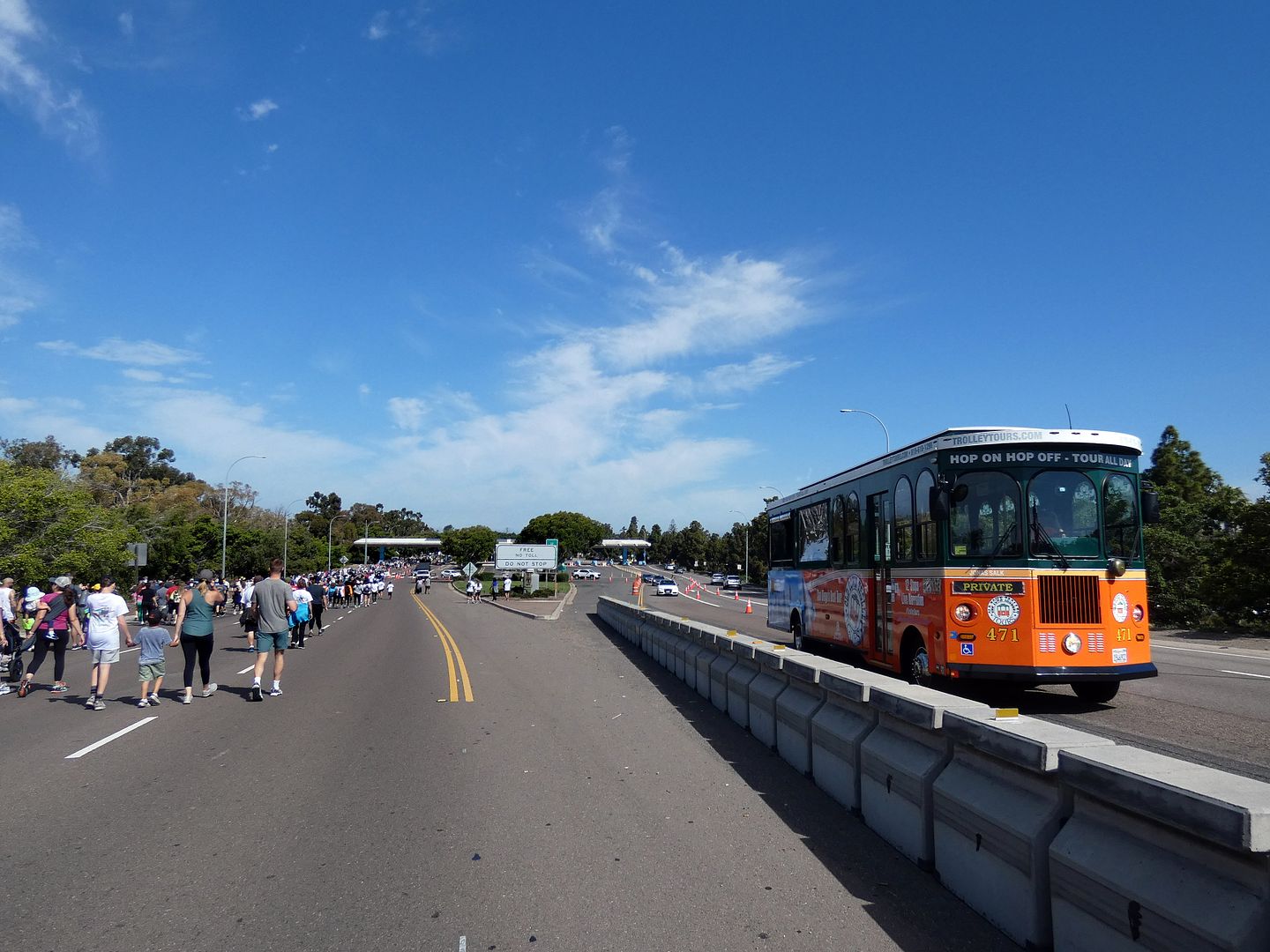

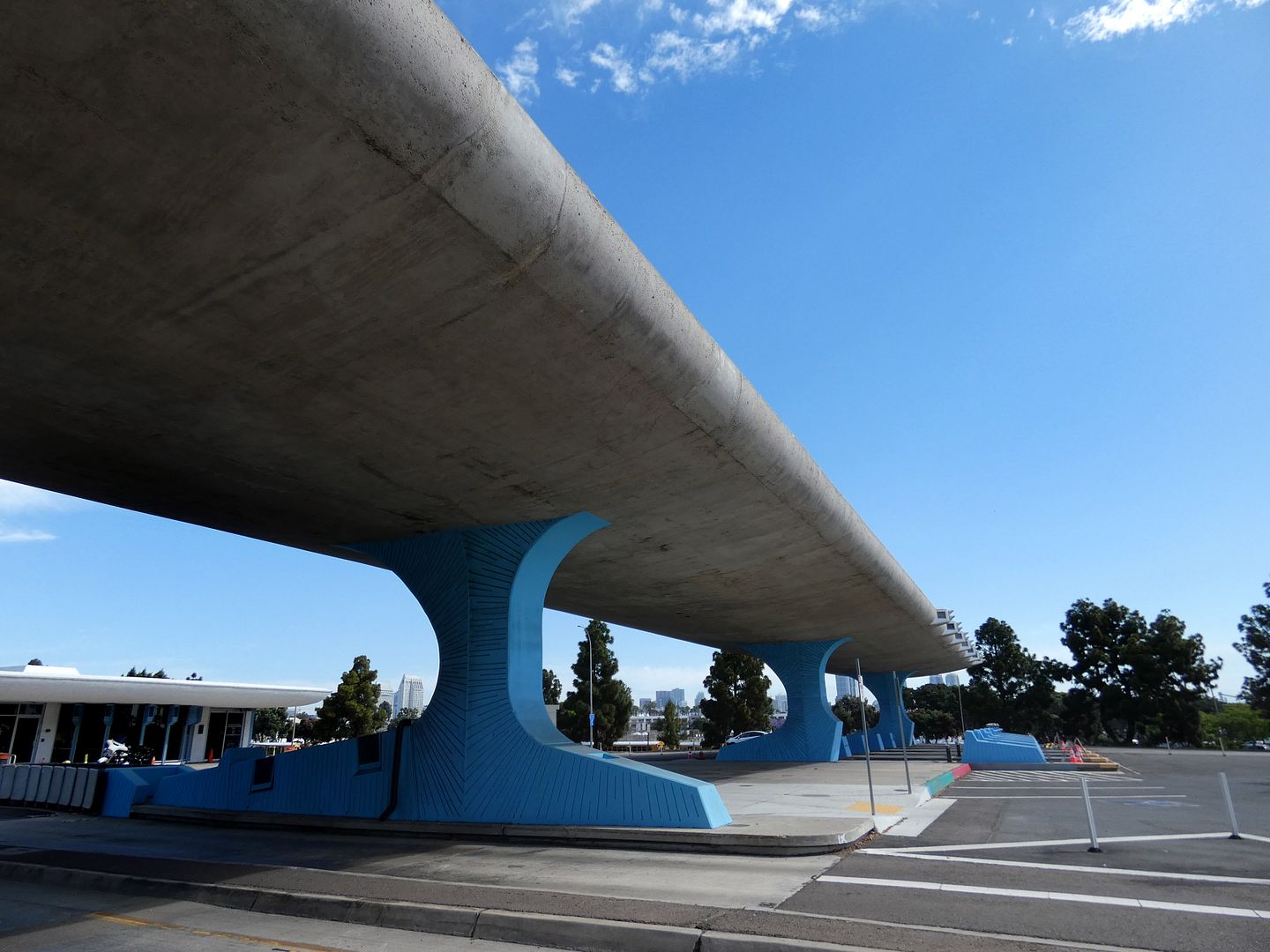

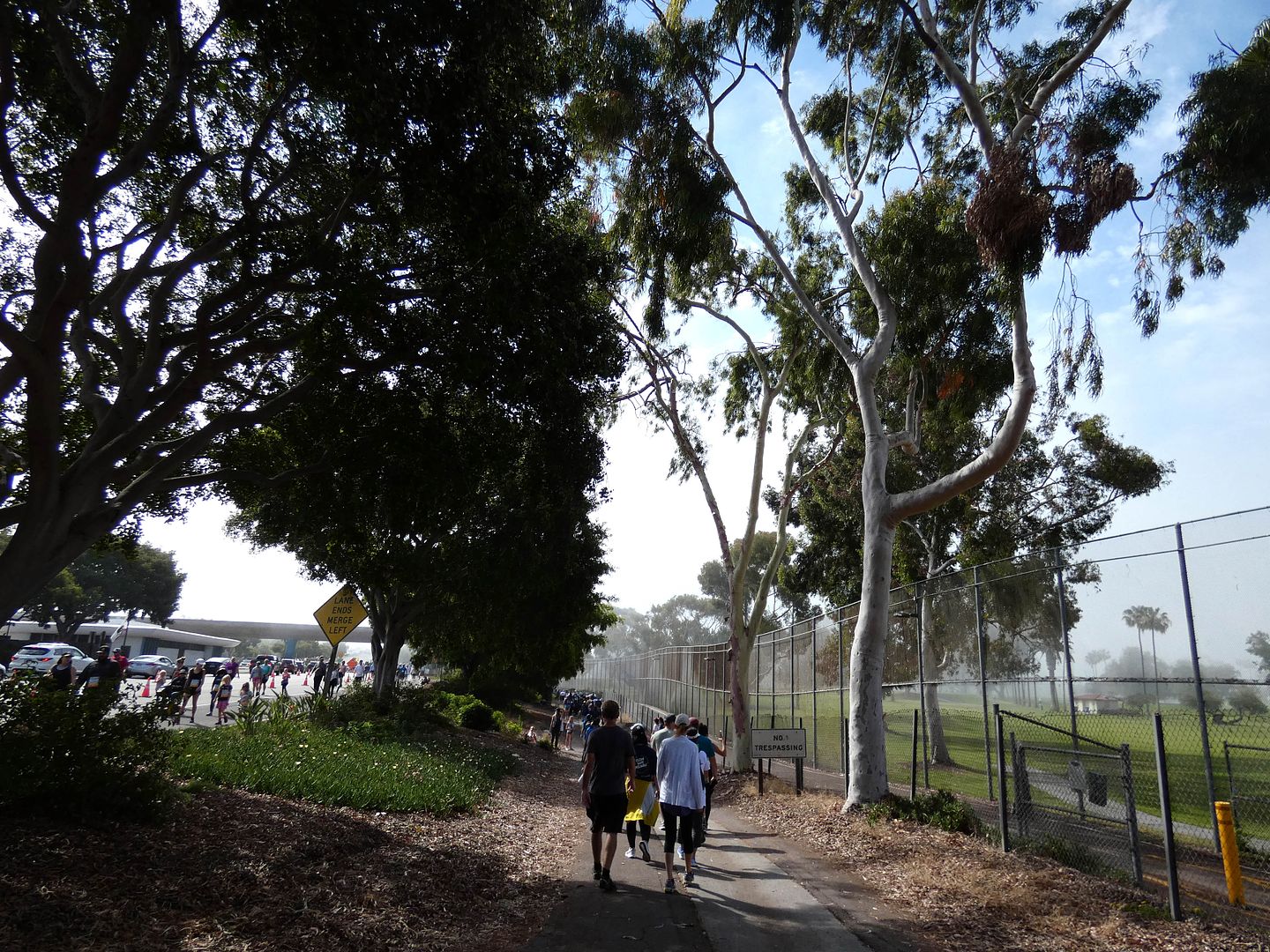
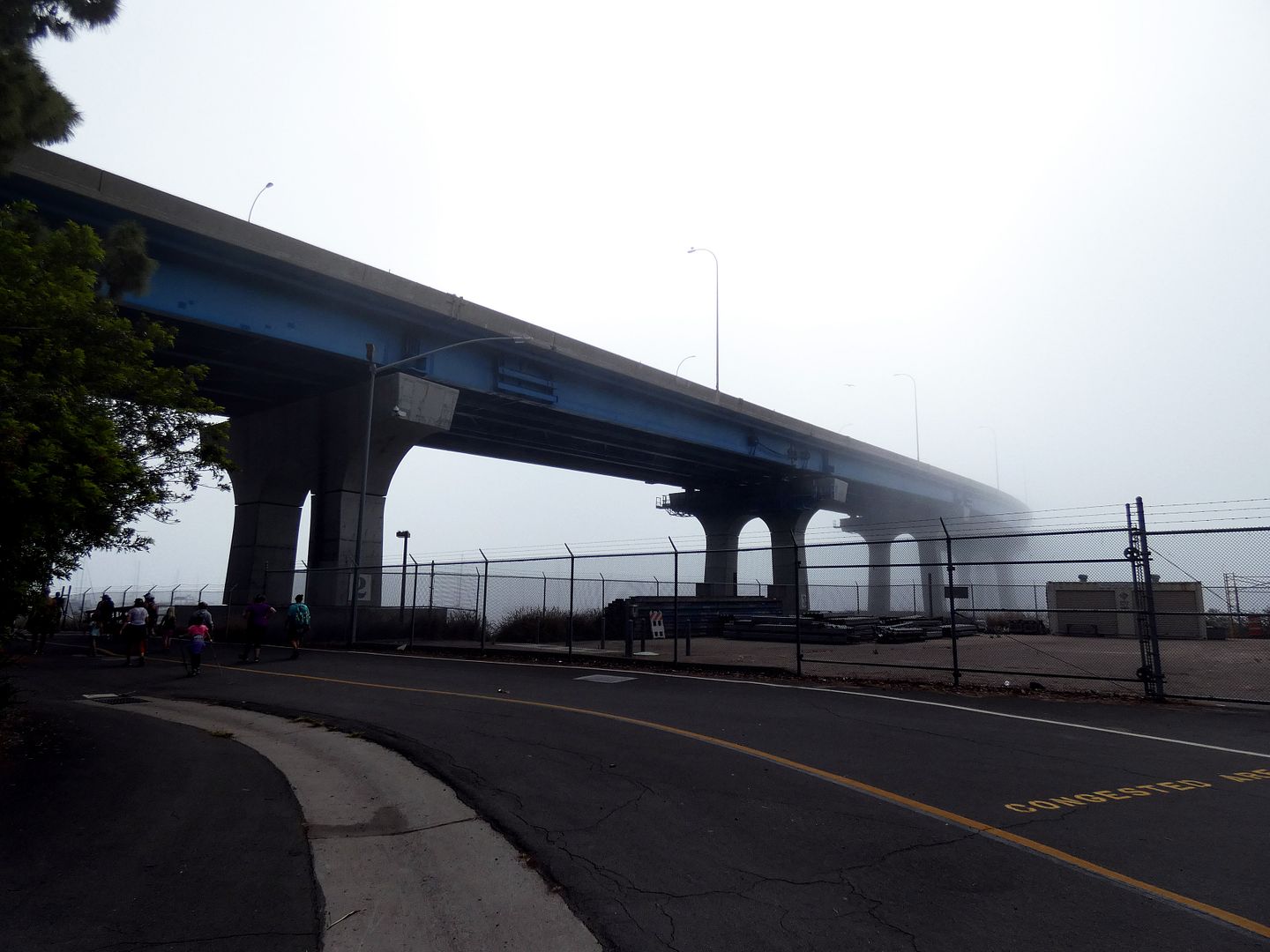
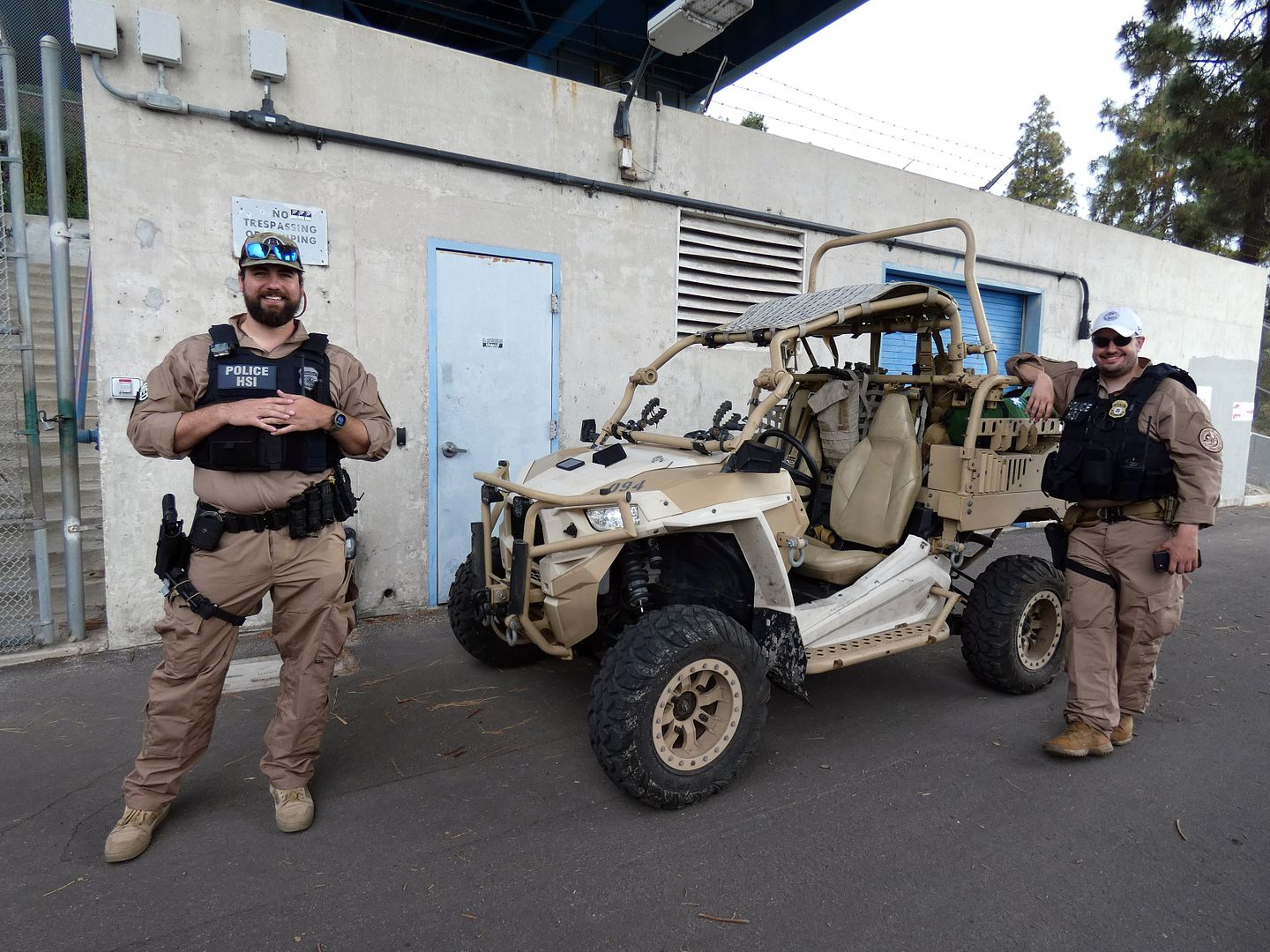
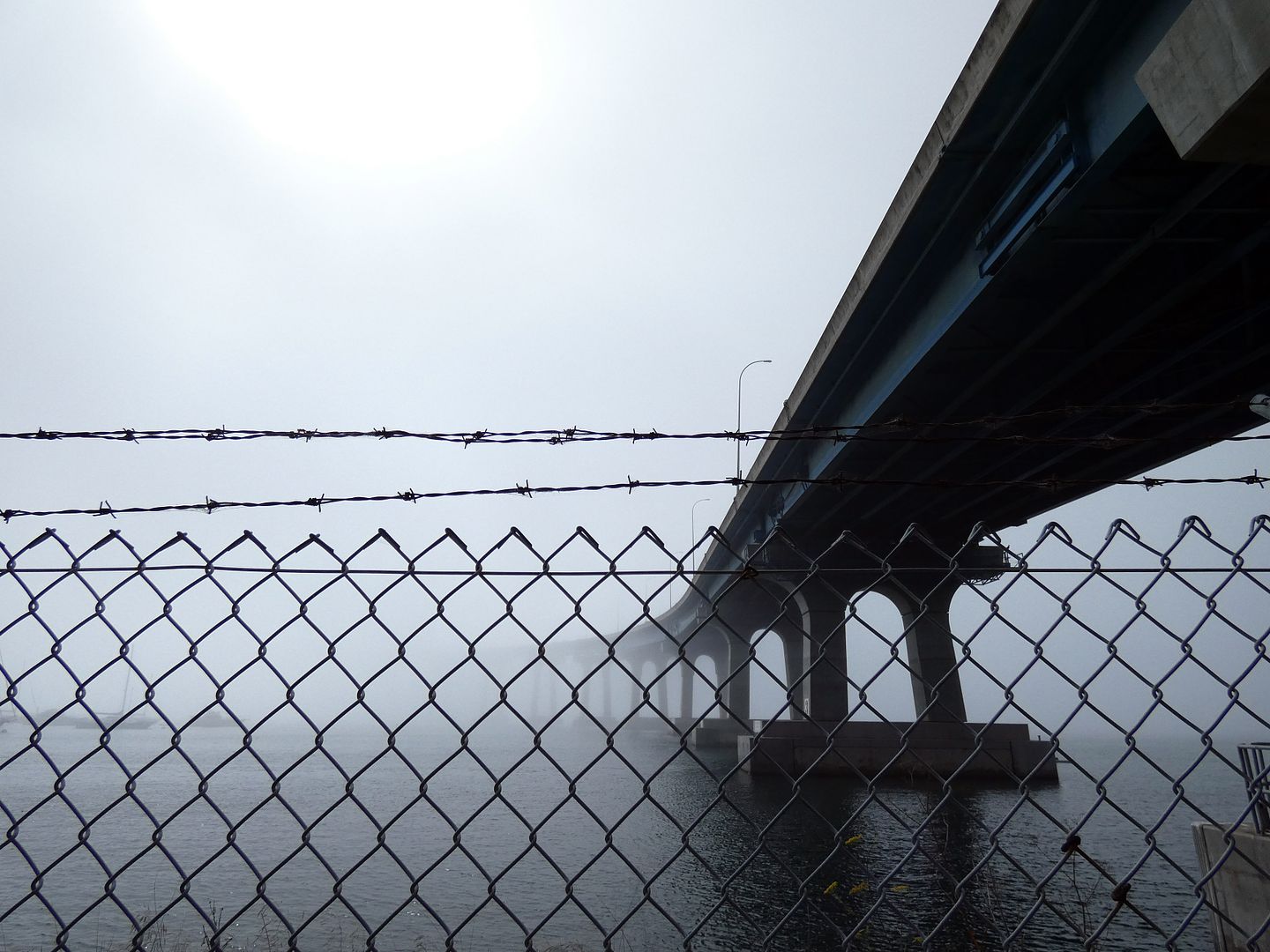
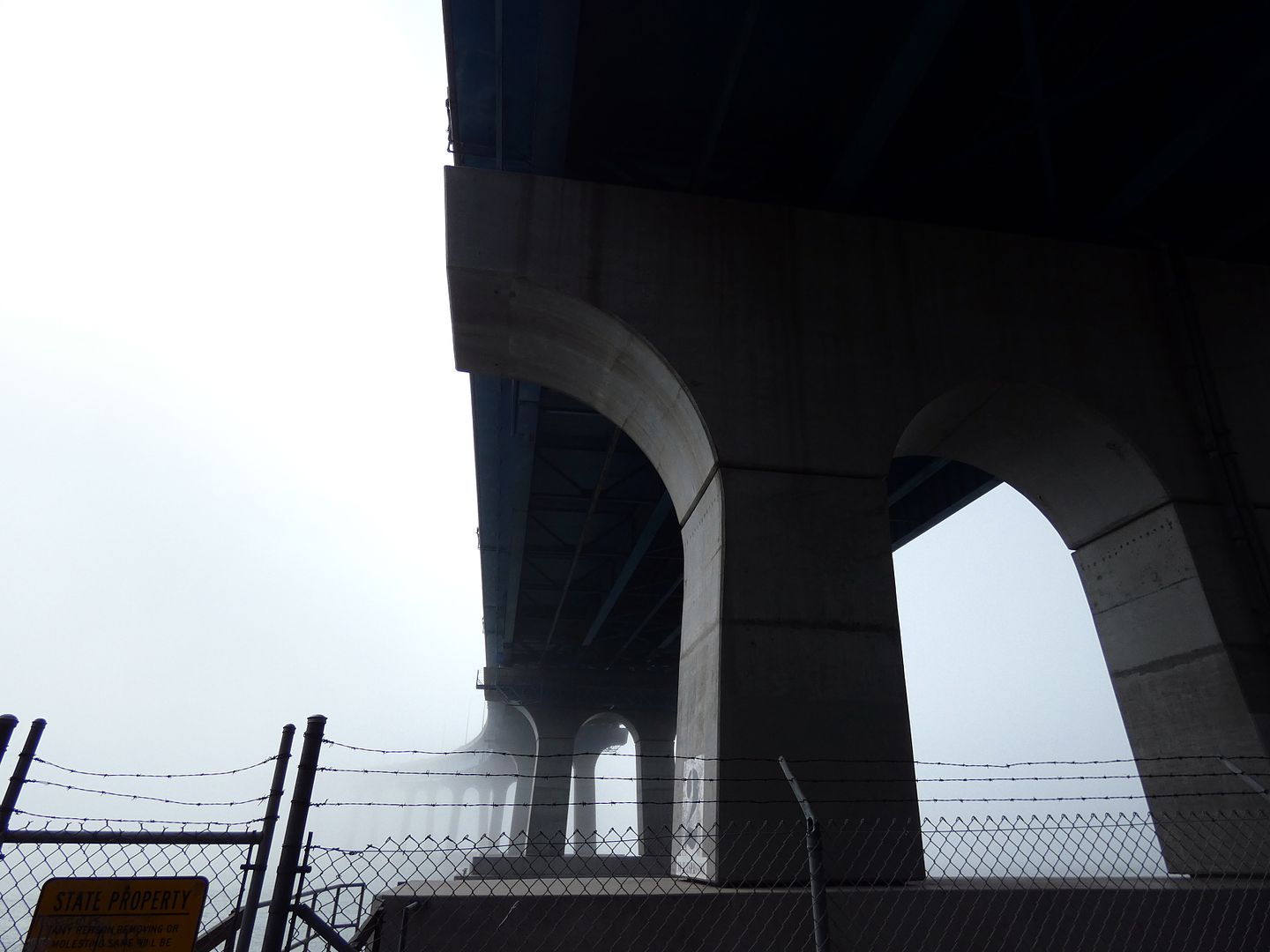
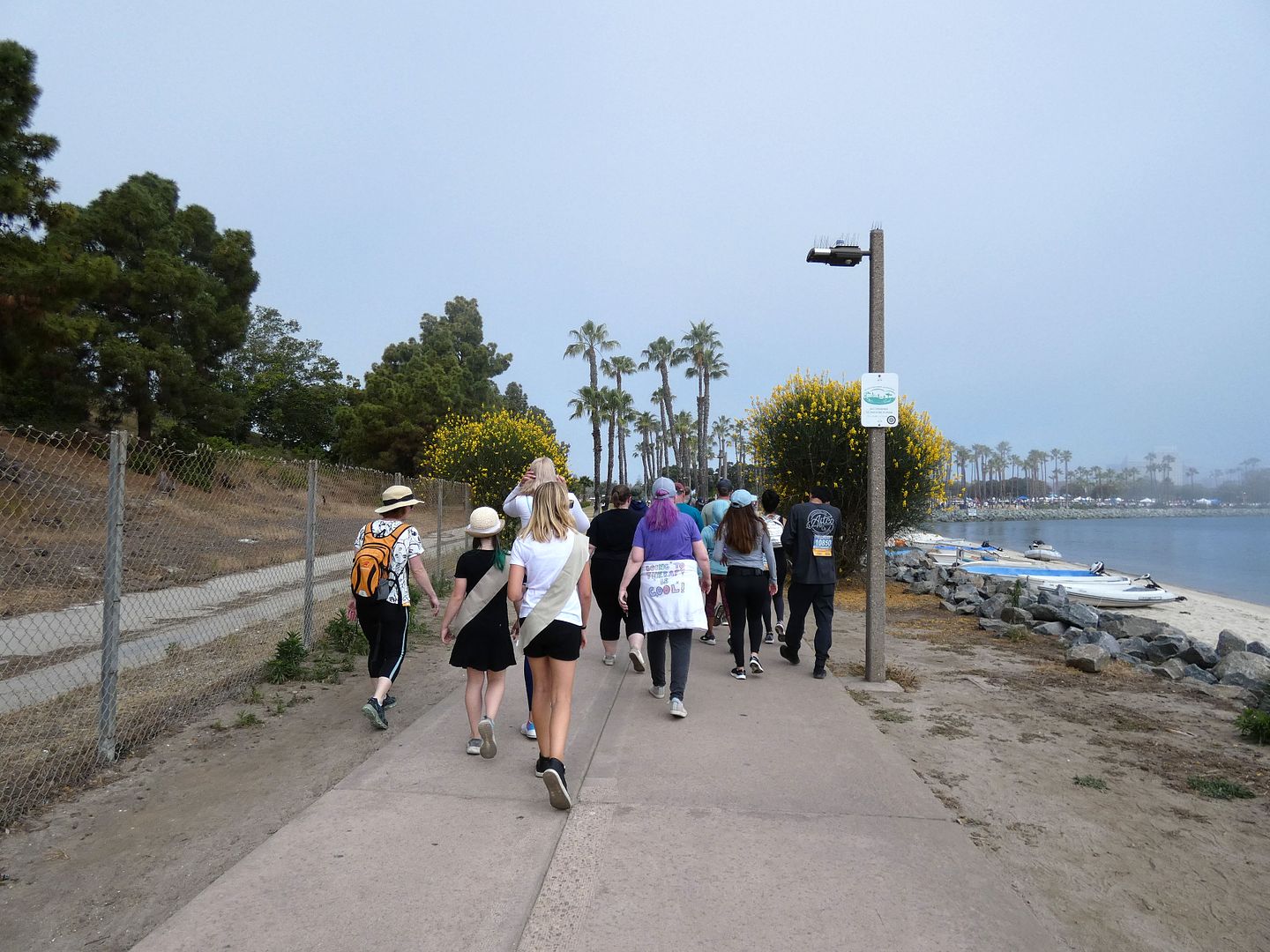
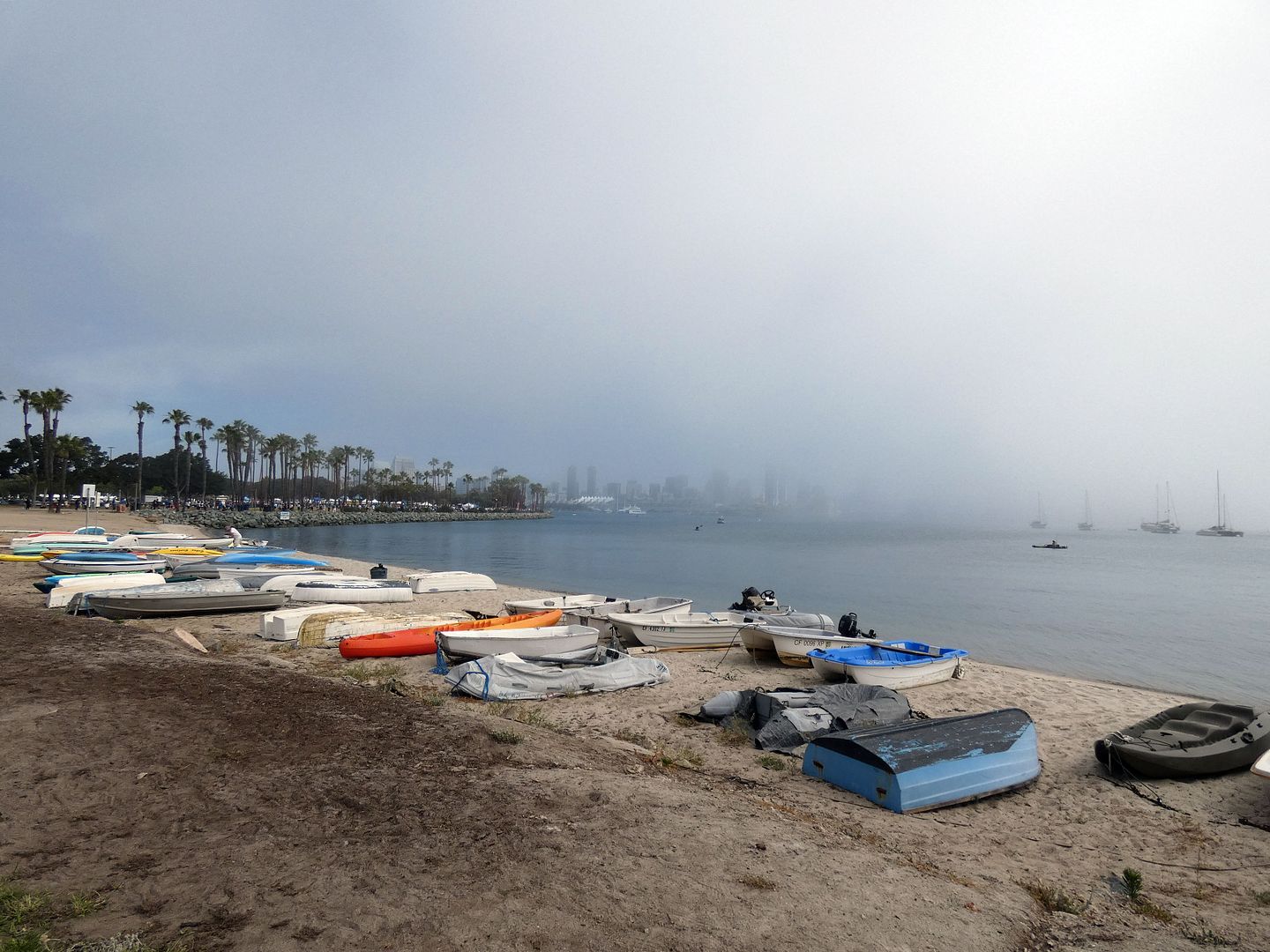
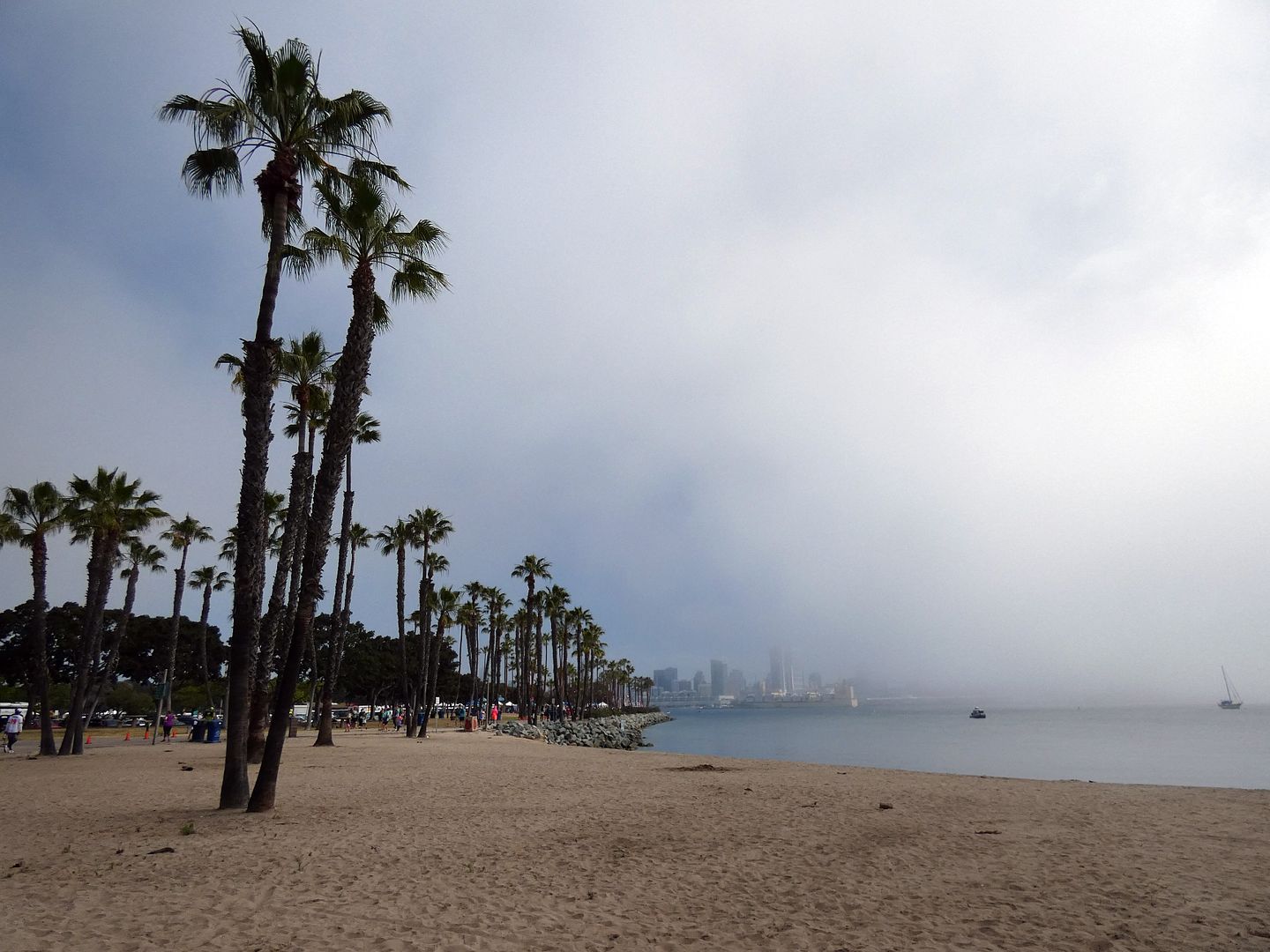
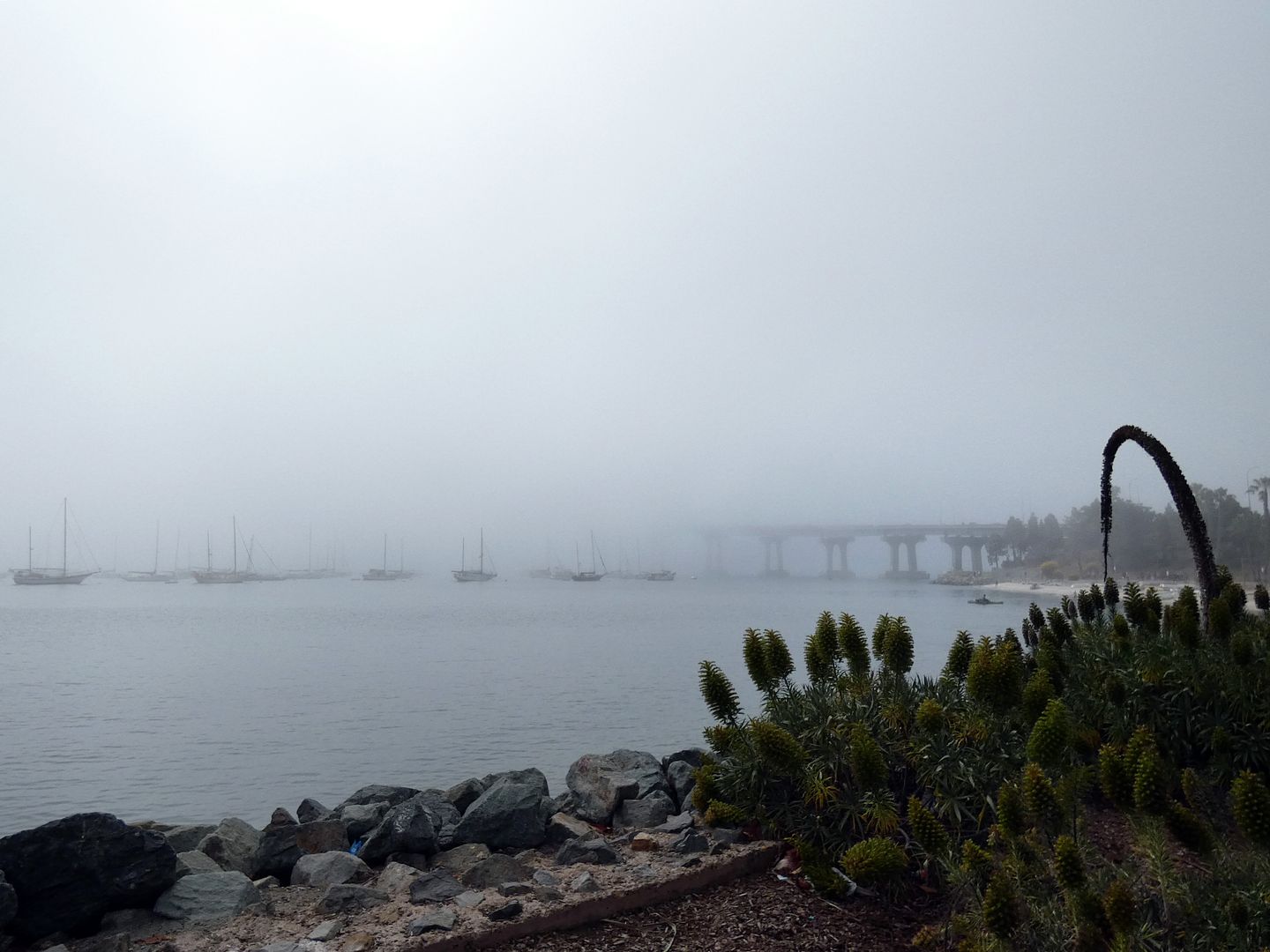
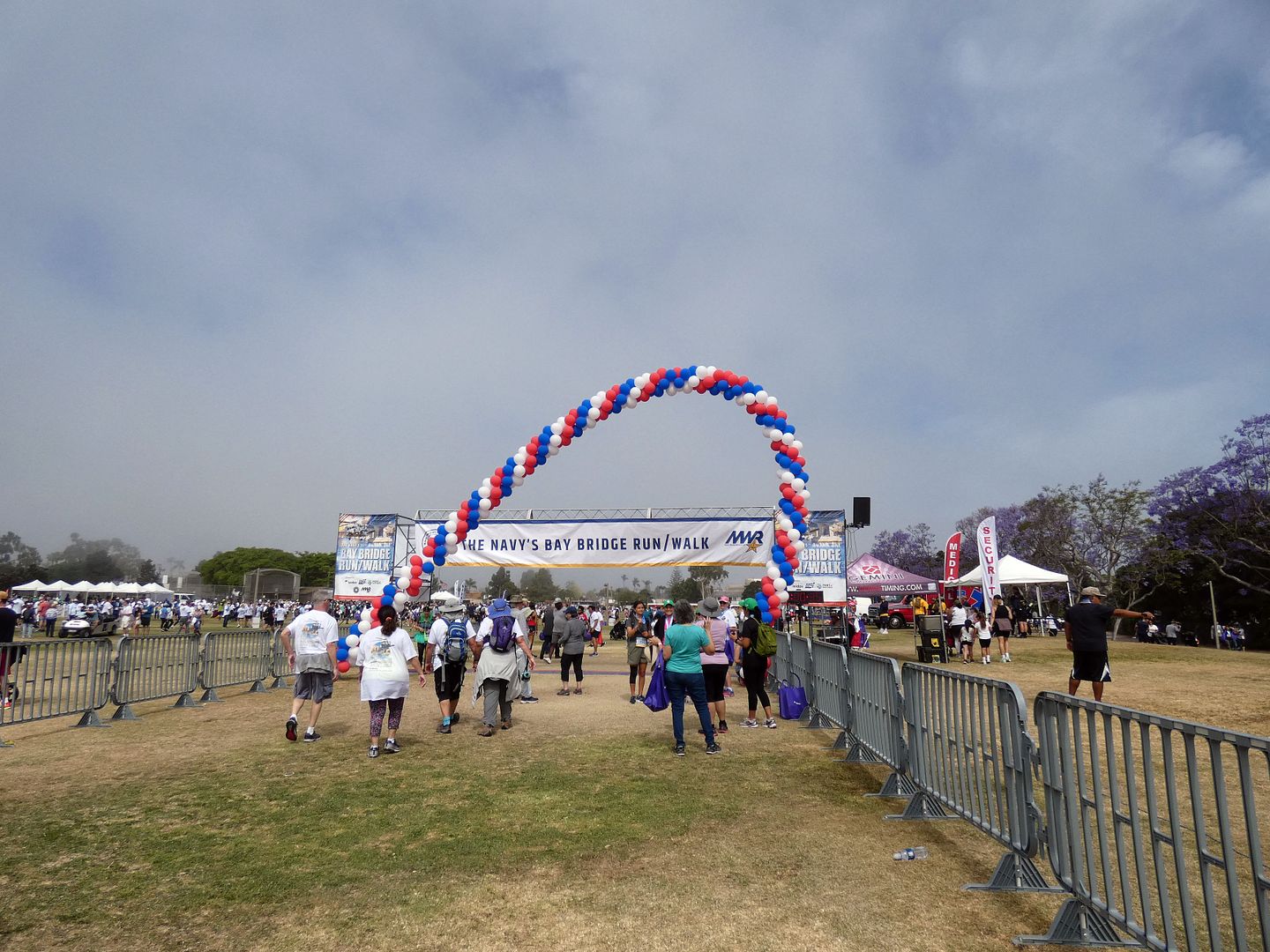
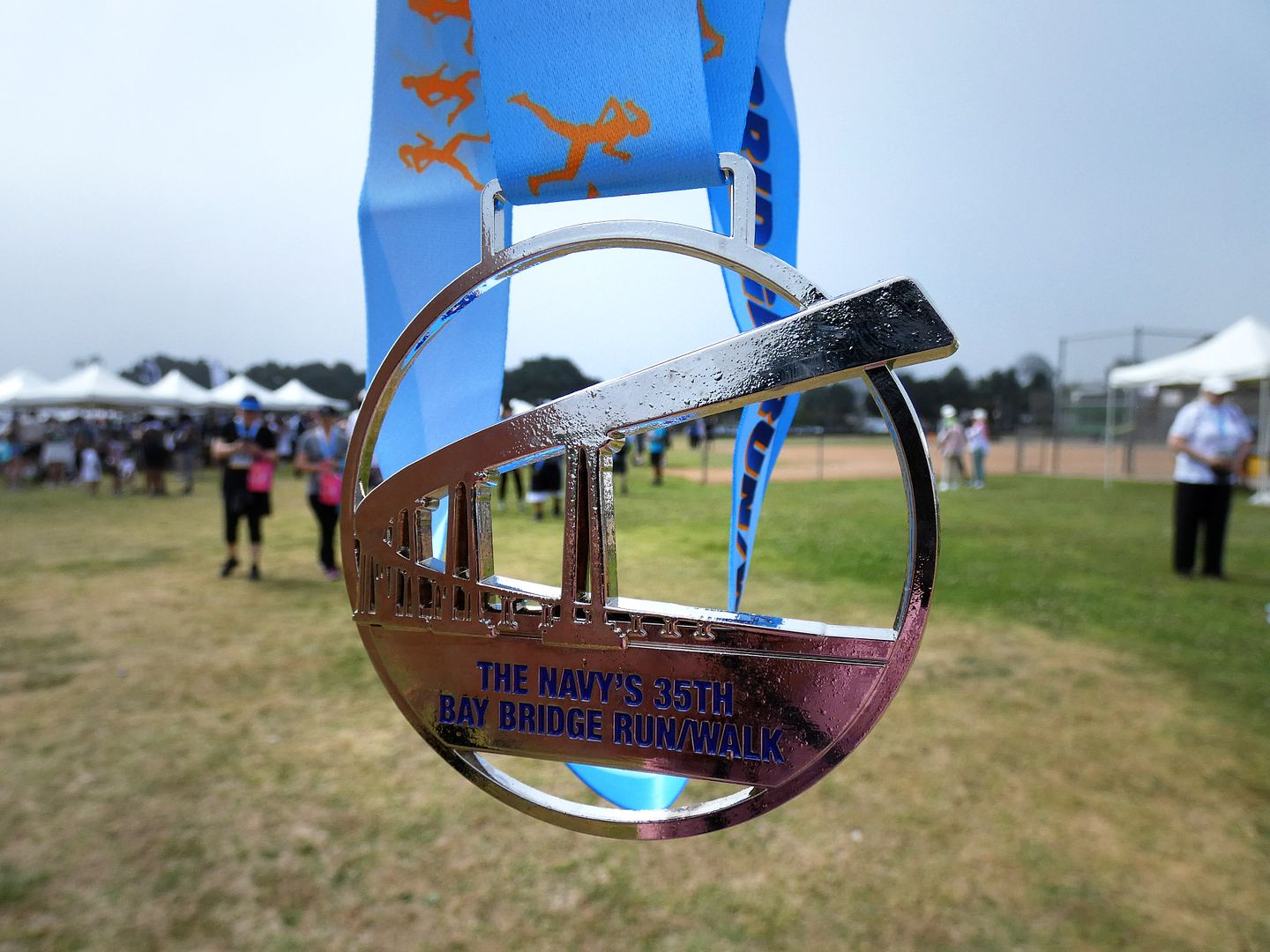

As some of the runners passed us on foot going back the way they came—and others had already hopped on the shuttle busses back to the starting point—we walkers still had nearly a mile to go before we could pick up our finishers' medals at the City of Coronado's Tidelands Park.

A handsome CHP officer offered some motivation to keep moving along.

Although I'd driven through the bridge's 12-lane toll plaza before, I stopped to admire its postcard-worthy, mid-century architectural canopy and sculptured pedestals. Tolls haven't been charged here at the gateway to Coronado since 2002—but reportedly, the plaza will stay in case tolls are ever reinstituted (likely to fund a renovation project or the addition of a suicide prevention barrier, as toll collection initially funded the bridge's construction).

More live music awaited us under the canopy...

...after which we rounded a corner through a "No Tresspassing" zone alongside the Bayshore Bikeway (a.k.a. the Silver Strand Bikeway)...

...which is part of the route of the annual Bike the Bay bicycle ride across the Coronado Bridge.

Now passing under the bridge, there were more friendly faces to greet us—but when I jokingly asked them, "Is this the shuttle?", I was not-so-secretly hoping for a ride the rest of the way.

I was really crawling at this point, with the sun disappearing behind the fog—and none of the San Diego side of the bridge to be seen as a reminder of my accomplishment thus far.

It was like a different time of day—or maybe even a different day—under there. And I had no clue how long I'd been walking.

I only knew I still had a little ways to go before I could get my medal—and that I was trailing behind a Girl Scout.

This was a part of Coronado Island I'd never been to before—so I made a mental note to come back for some kayaking someday.

Maybe on a day when I could actually feel my legs—and my feet didn't hurt like hell.

A day when the Coronado Bridge would be in better view.

Fortunately, if I kept facing forward, the sun would eventually reveal itself to me—and shine its light on the finish line, which I crossed at 10 a.m., two hours after the runners first set off from the starting line.

What really pushed me through to the bitter end was the medal that was waiting for me there—but what brought me to the Navy Bridge Run/Walk in the first place was the bridge itself. And I'm proud to have conquered my fear and trepidation—not to mention exhaustion and physical pain—to have experienced such an epic adventure.
Enjoy the above timelapse video of the Coronado Bridge by Rugged Productions.
Related Posts:

What a wonderful article. I enjoyed your commentary and your photographs equally.
ReplyDeleteYou have pushed me past my hesitation and, God willing, I will be walking over the bridge this May!
Thank-you so much!
Good luck! It's worth it!
Delete